"HOW ABOUT HOBART?"
This is my entry for the Travel writing contest organized by @invisusmundi
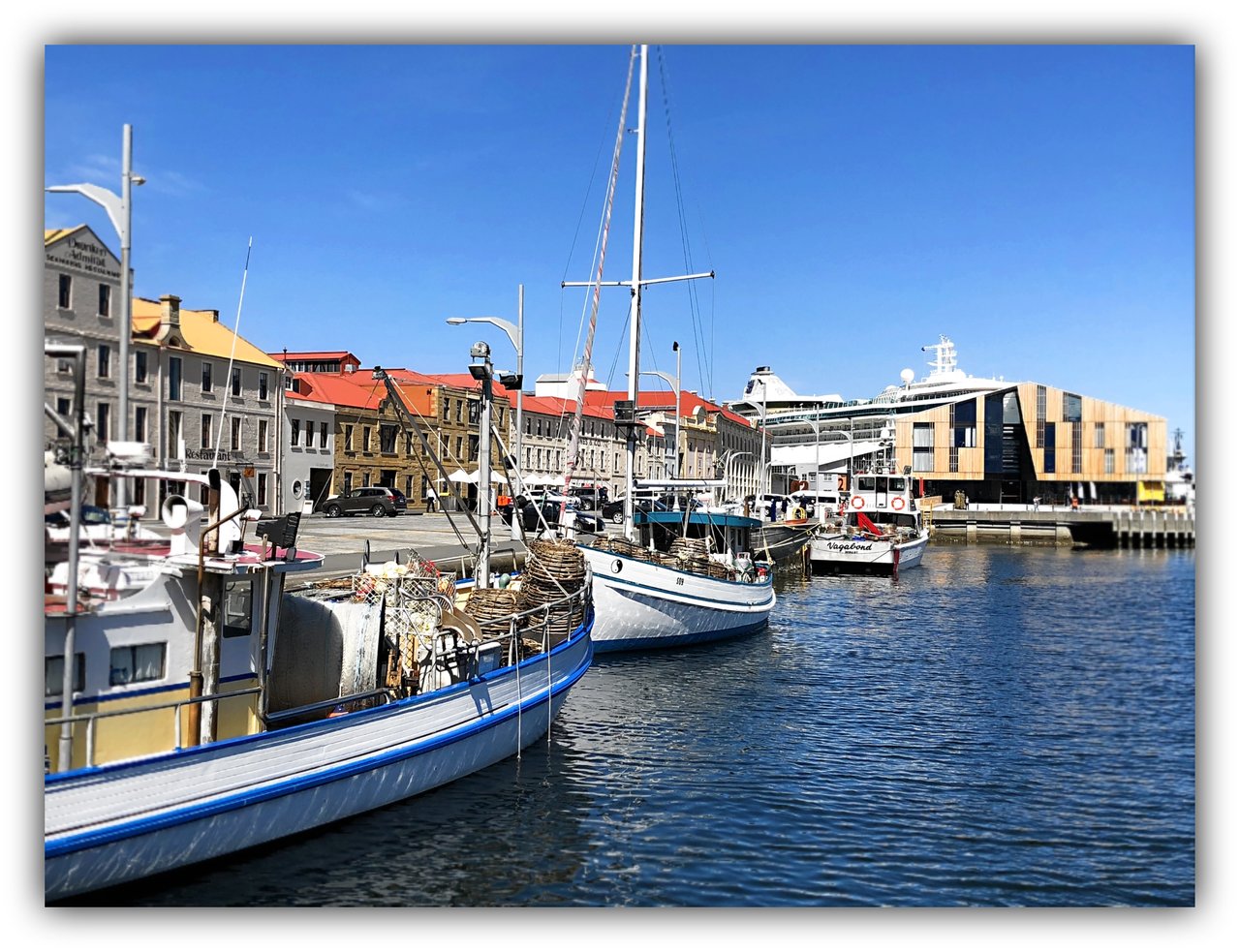
If you're planning a trip to Australia and not sure where to start, allow me to make a very worthy suggestion. "How About Hobart?" After visiting it twice myself, I don't think you can go far wrong.
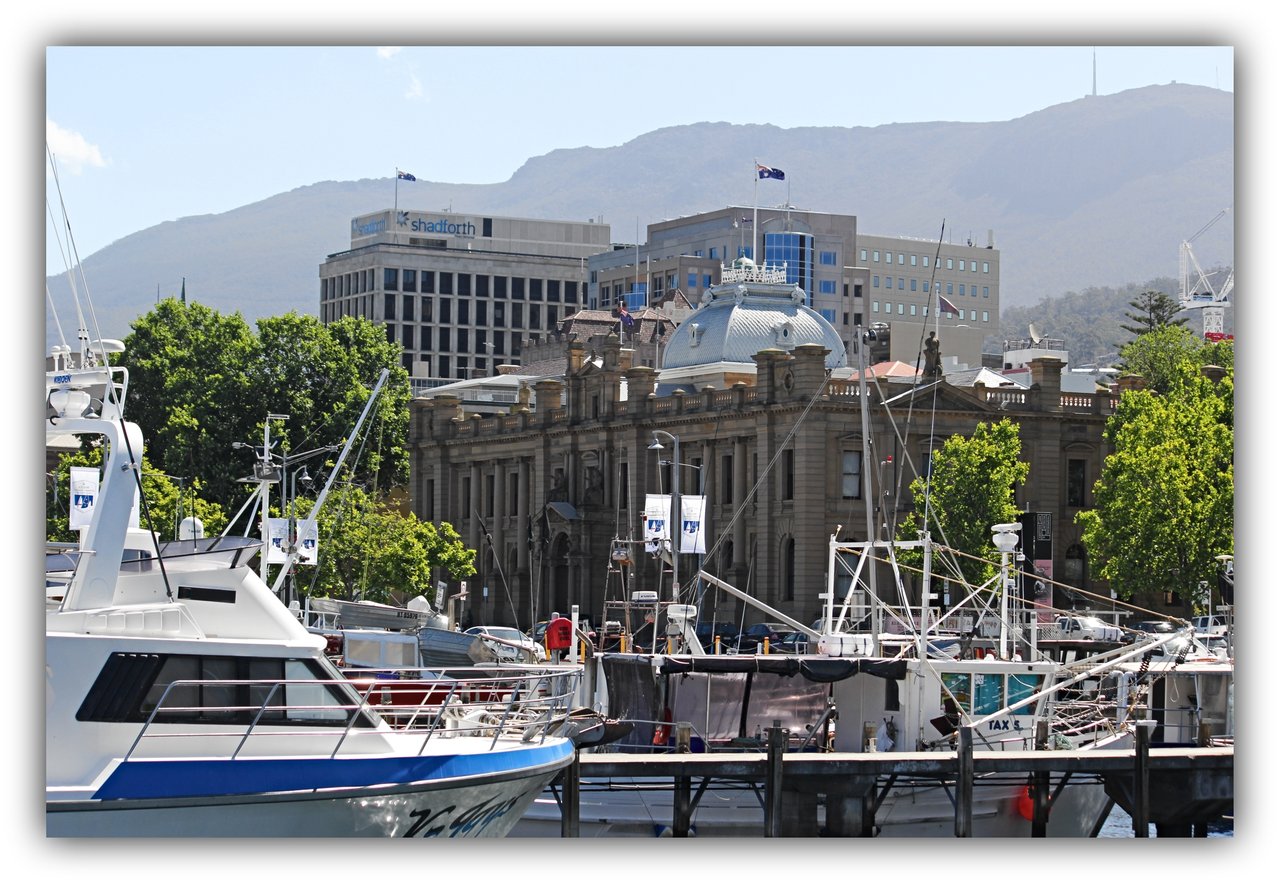
Hobart is the capital city of Tasmania and is the second oldest capital in Australia. Sydney is the oldest. It is situated at the entrance to the Derwent River and is surrounded by picturesque natural bushland and is also blessed with beautiful beaches which line both the shores and the estuary.
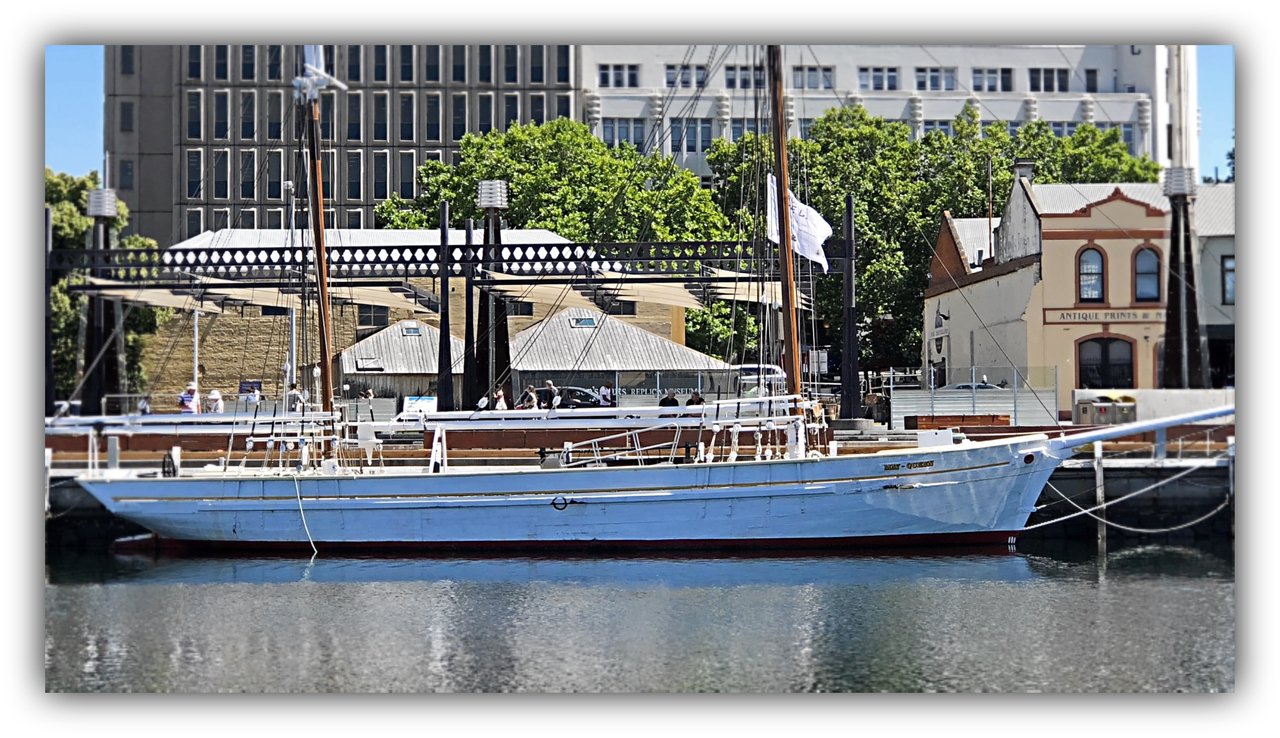
It is a city with much to offer with its rich history, attractive scenery, interesting culture and world class activities available. Nestled at the base of Mt. Wellington, Hobart combines the charm of heritage with a contemporary lifestyle. Lonely Planet has rated Hobart as one of the top ten places to visit in the world.
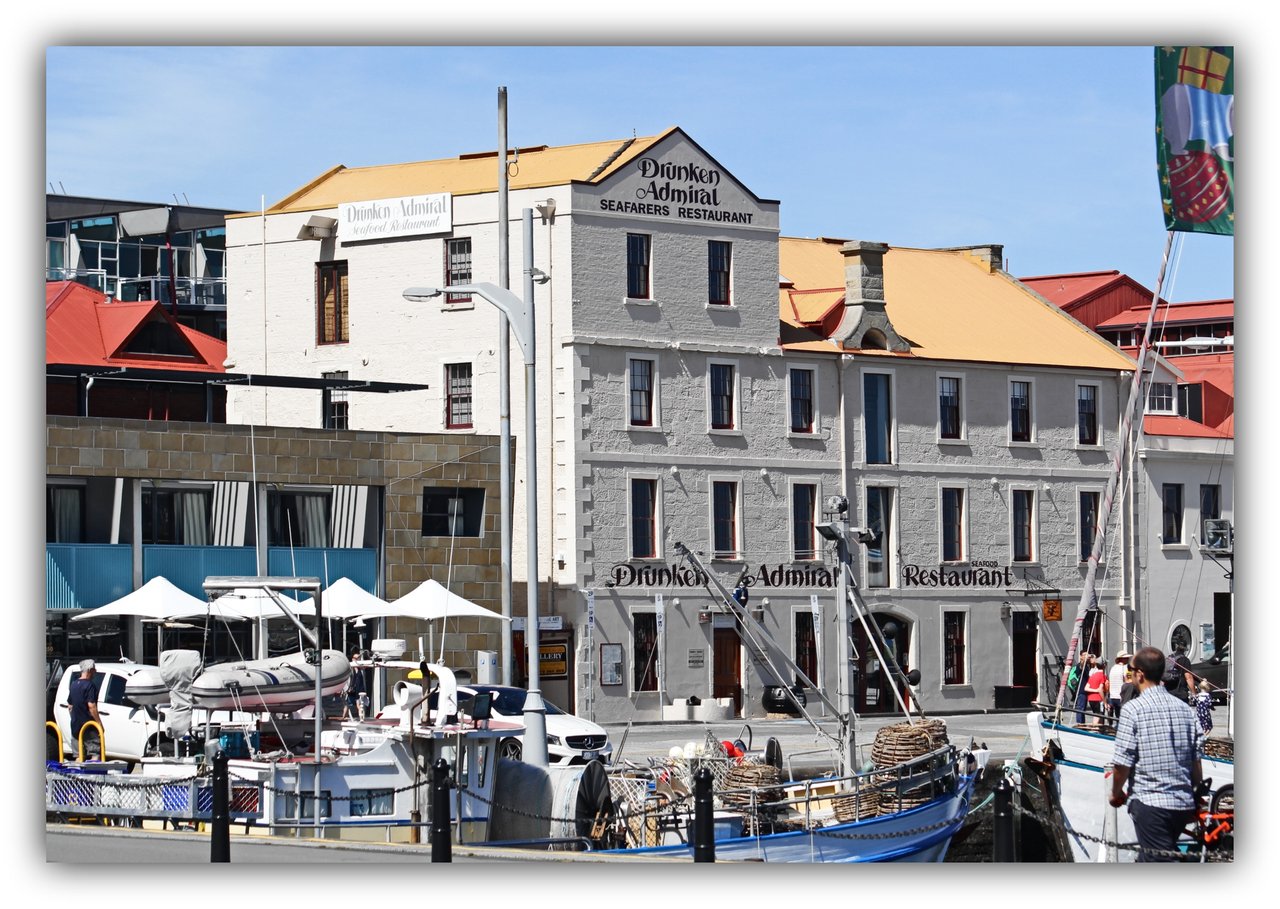
Gourmet treats abound, with its award-winning restaurants and fine dining experiences. This is made all the more tempting with the use of the very best Tasmanian produce, cooked by the world’s top chefs using of course, a wide range of seafood sourced straight from the Southern Ocean.
Source:
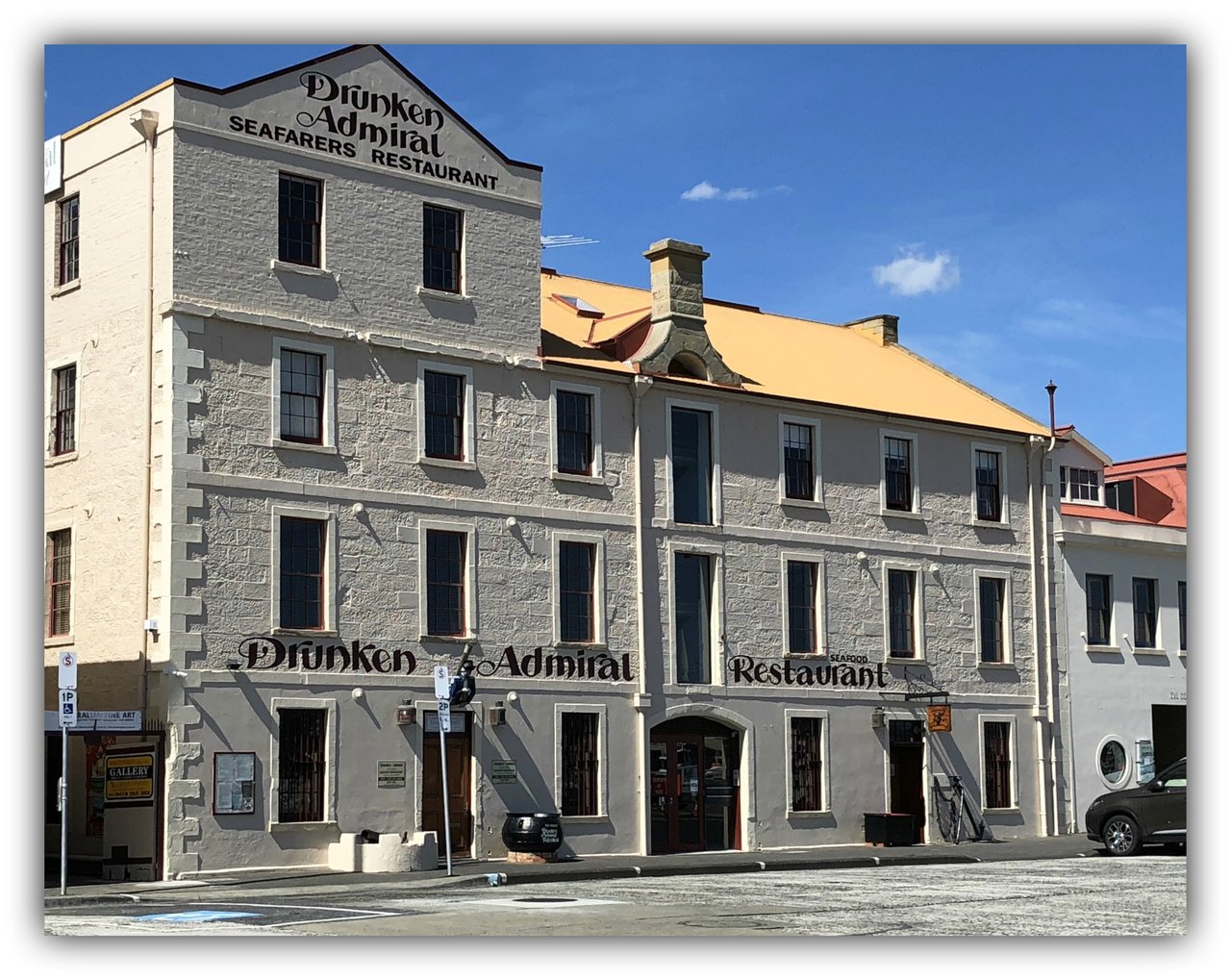
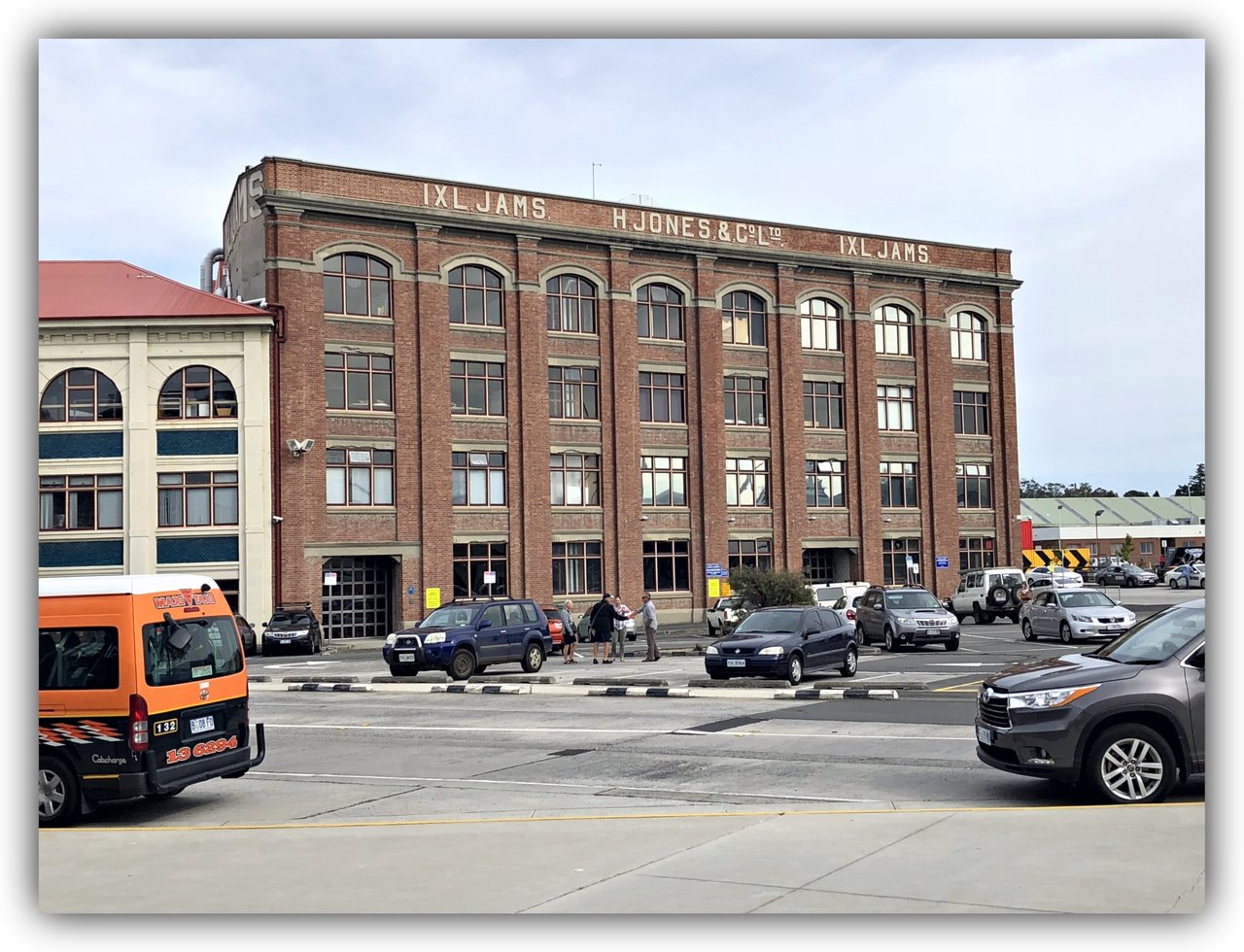
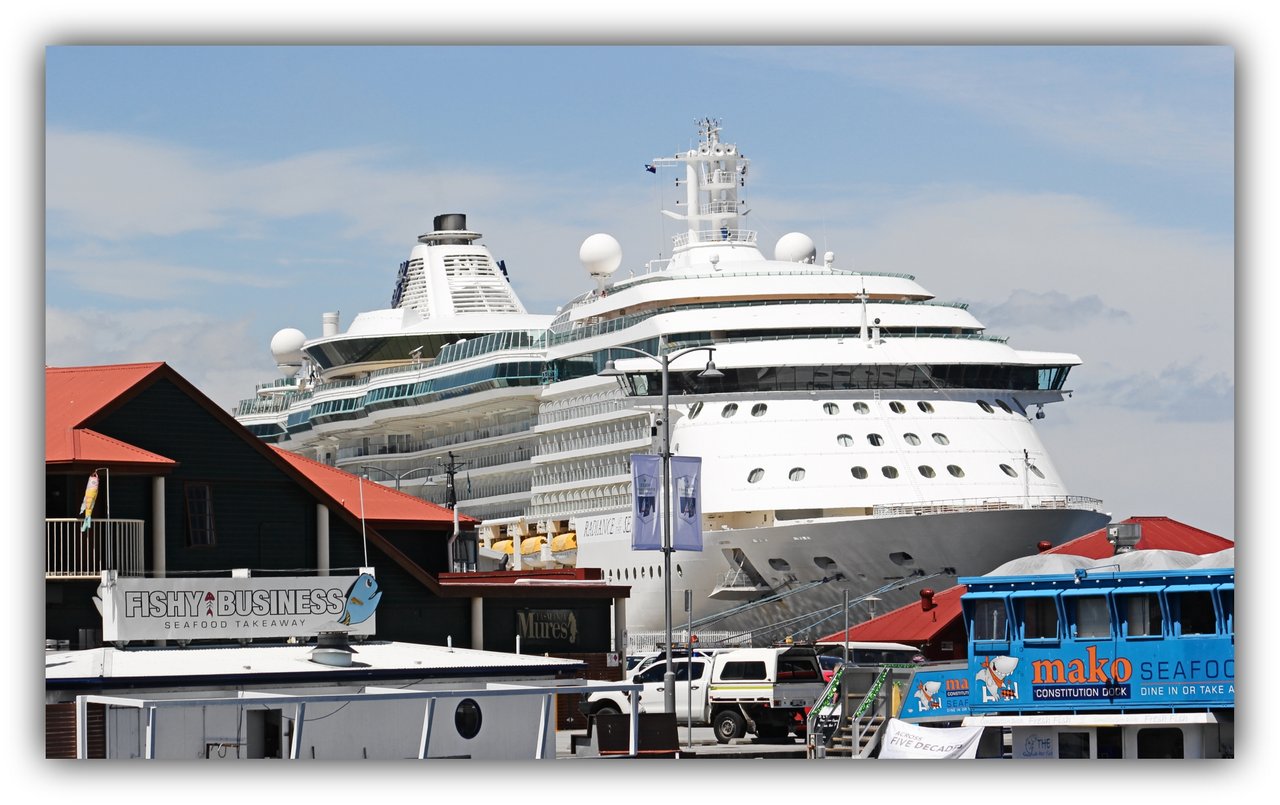

SALAMANCA MARKET:
Salamanca Place, is known as the cultural and creative heartbeat of Hobart, Tasmania. It is situated in Sullivan's Cove adjacent to the waterfront and close to the bustling center of the city of Hobart.
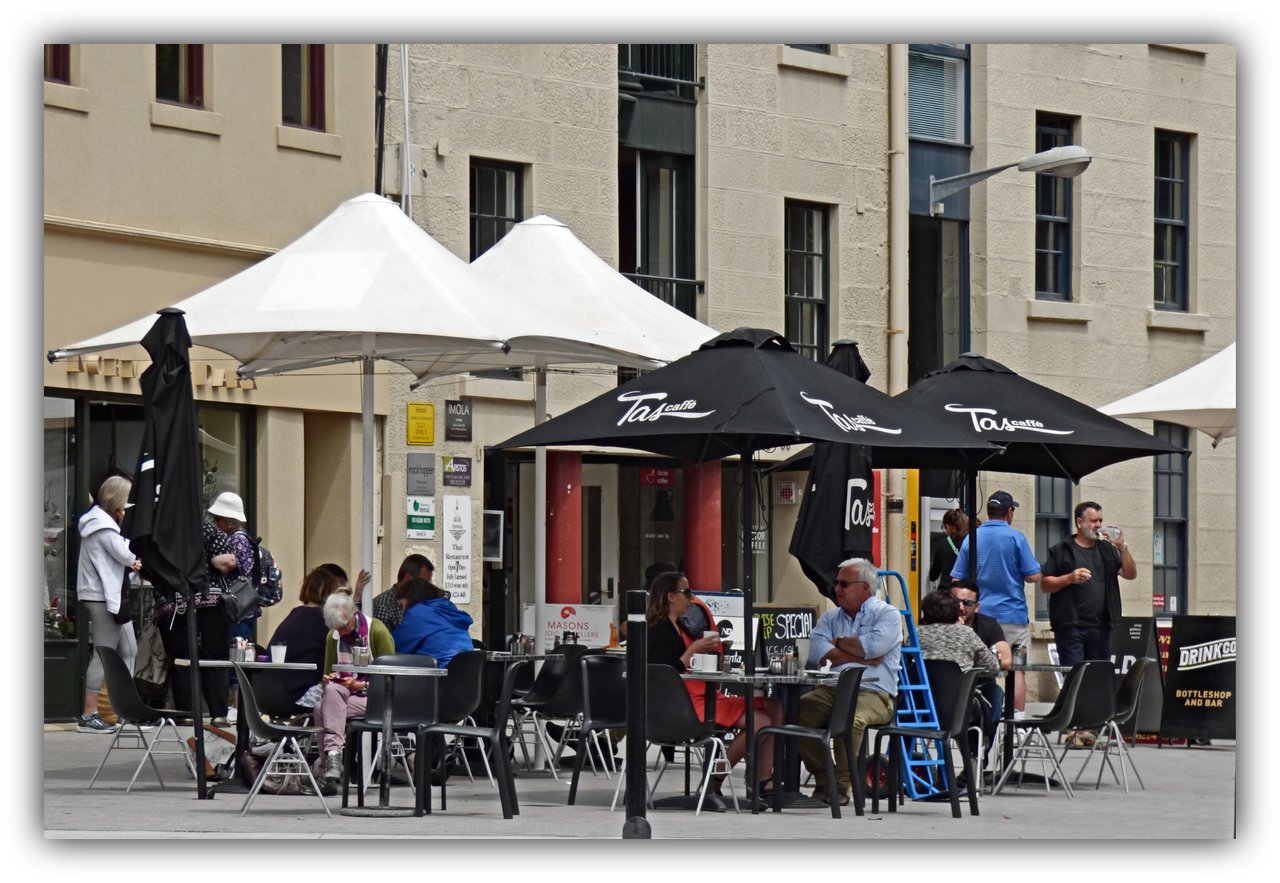
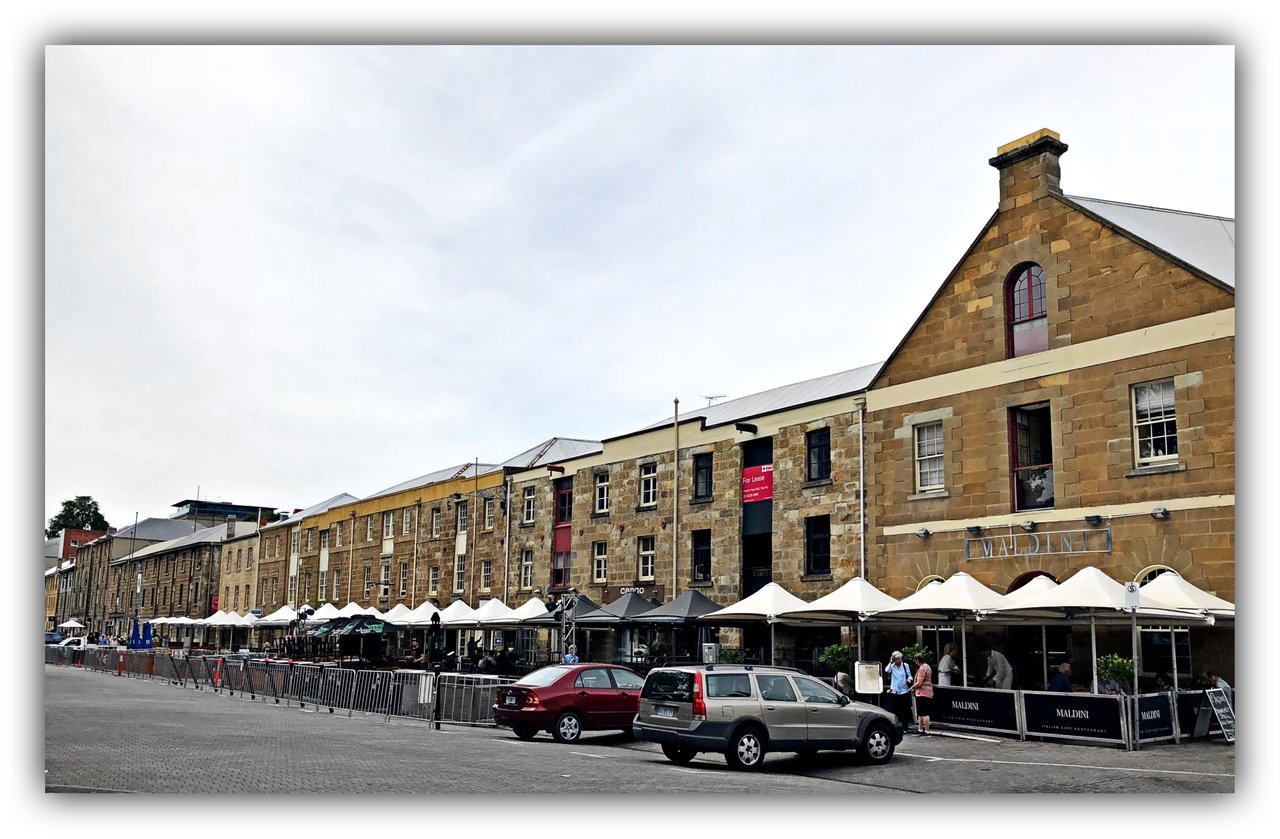
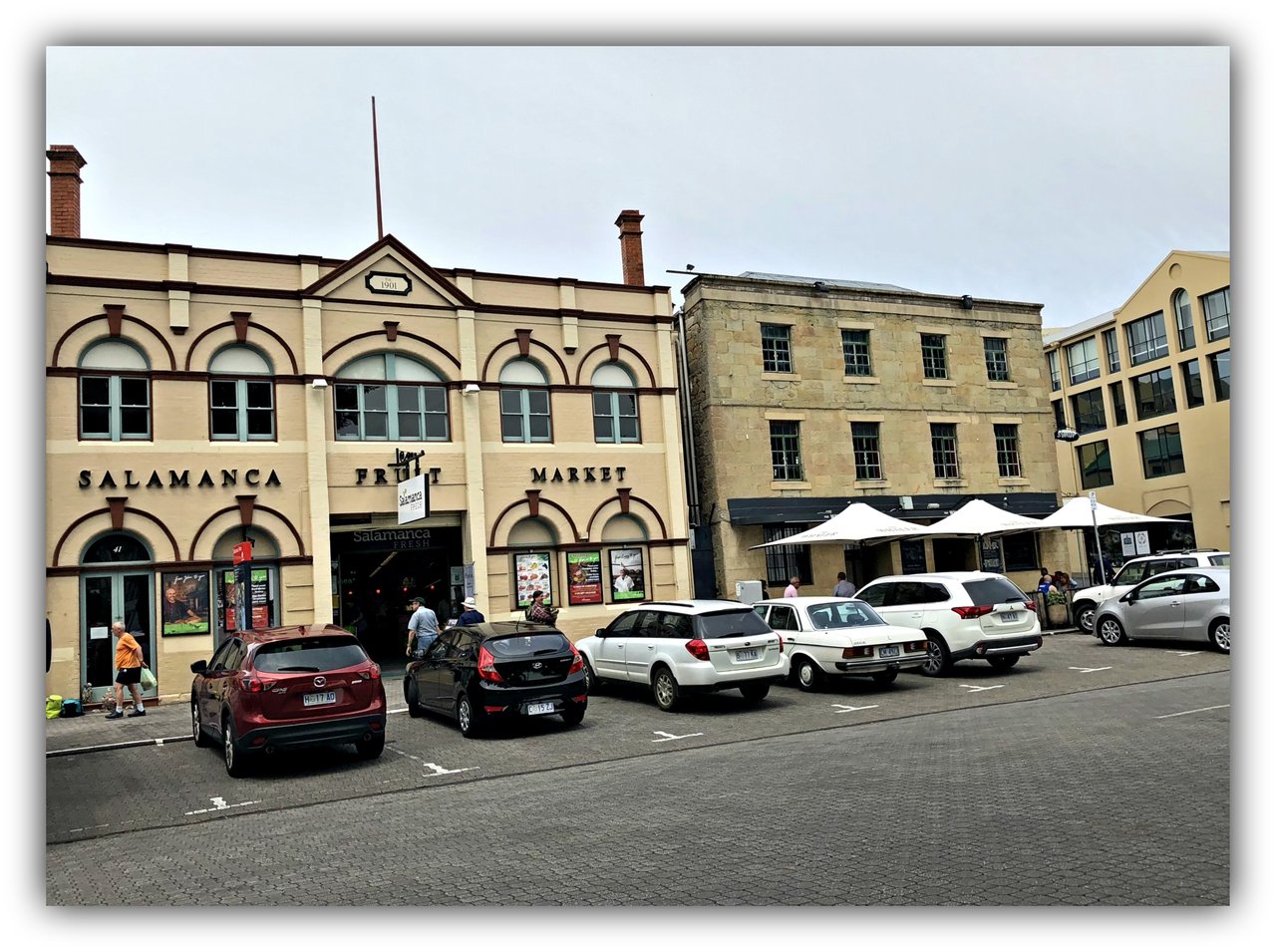
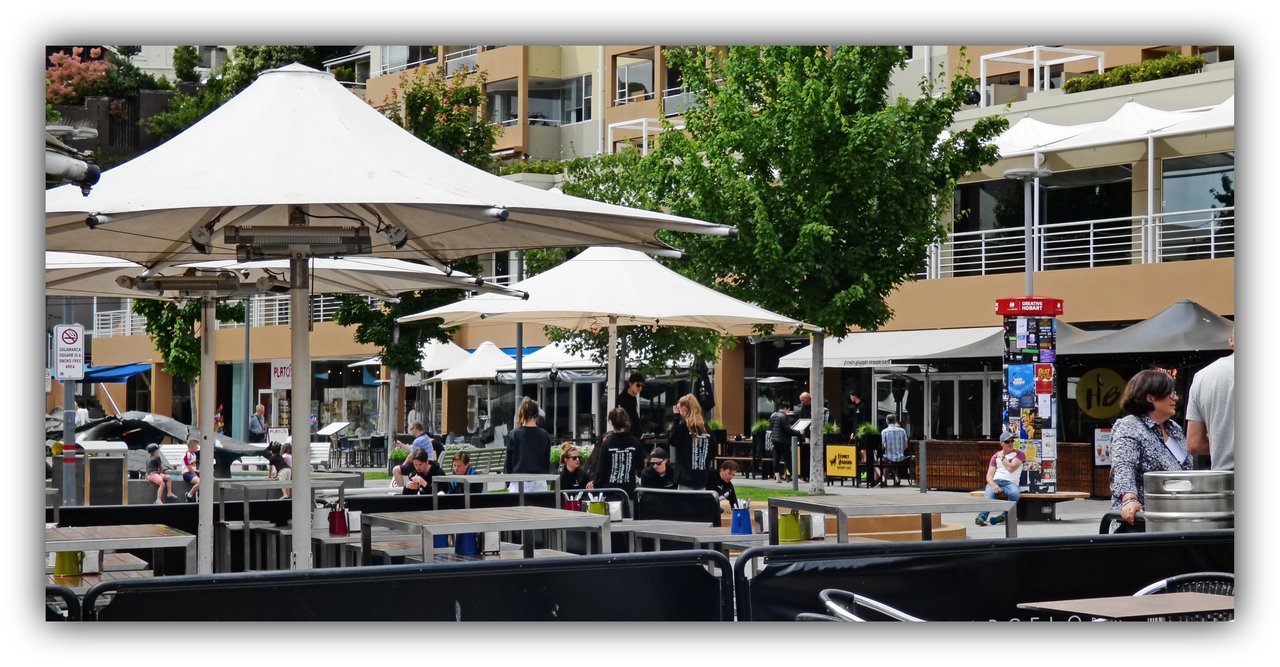
If you love seafood and you've never tried a scallop pie, then you will definitely want to treat yourself to one. I speak from personal experience when I say, "They are worth every delicious mouthful."
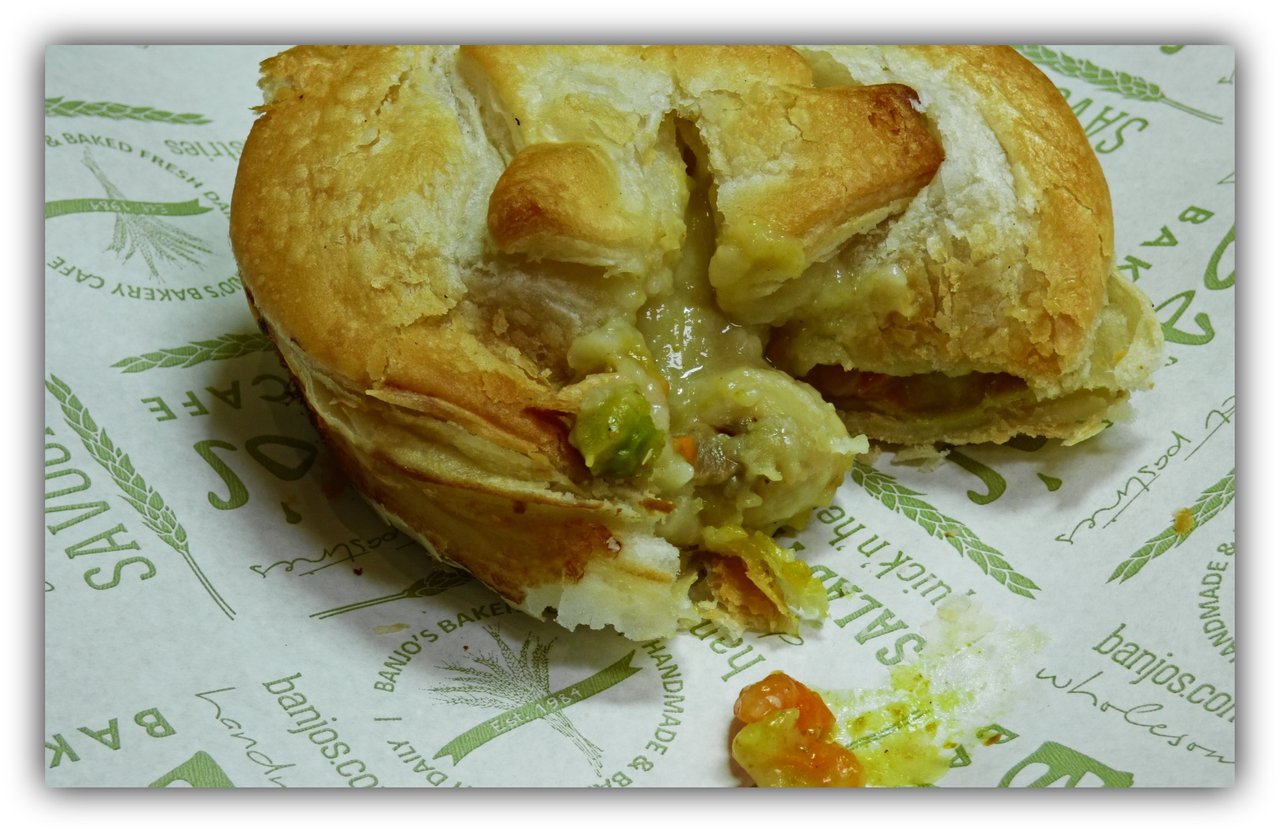
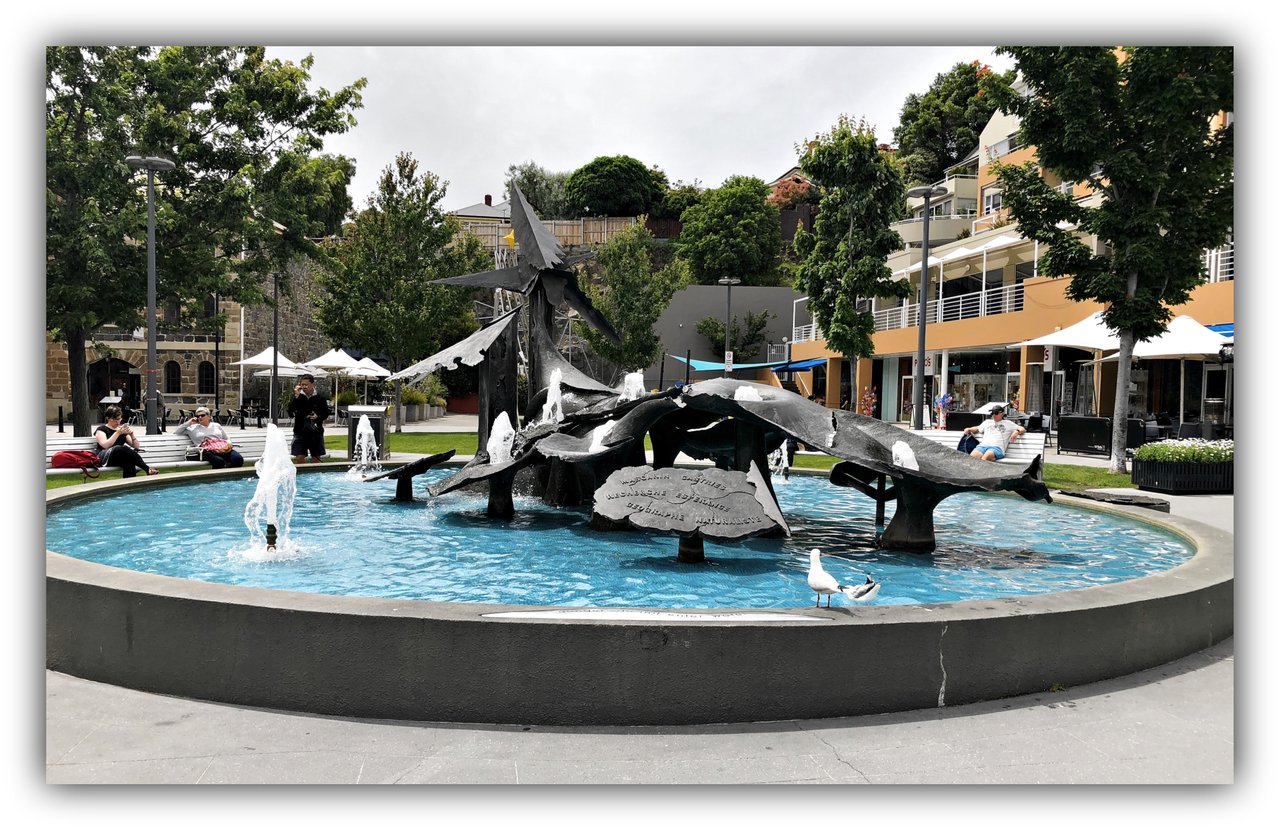
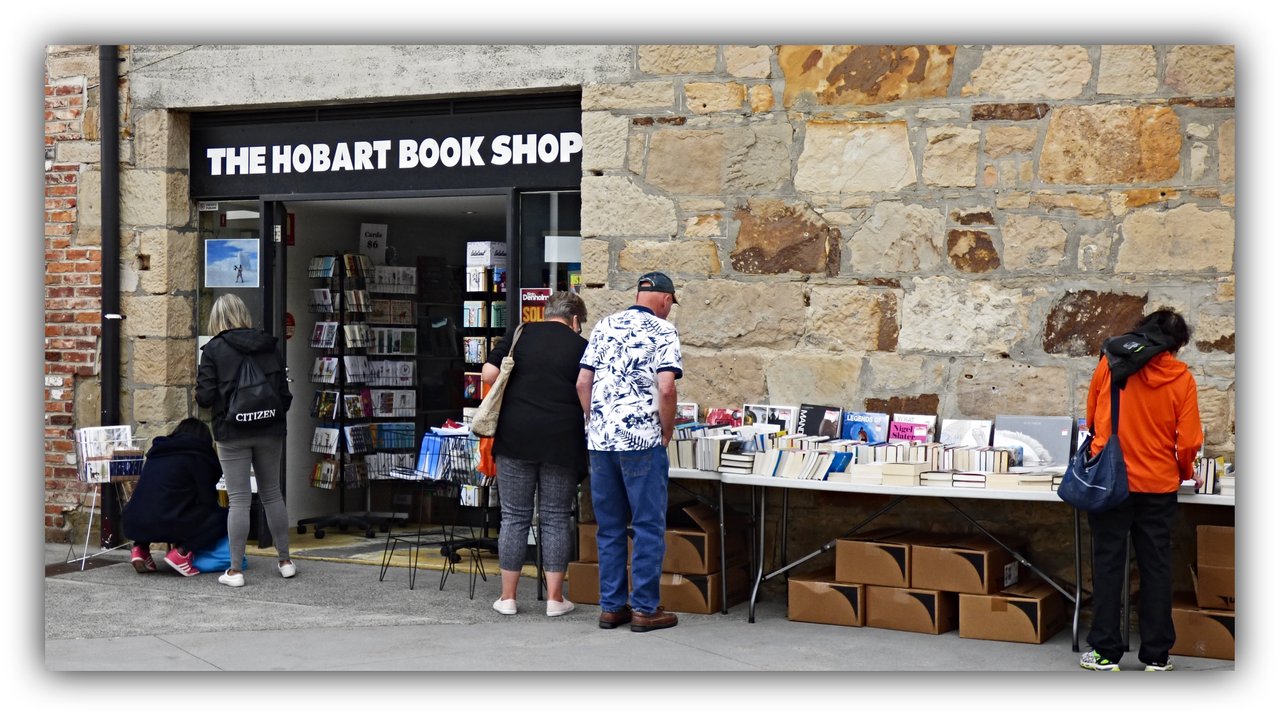
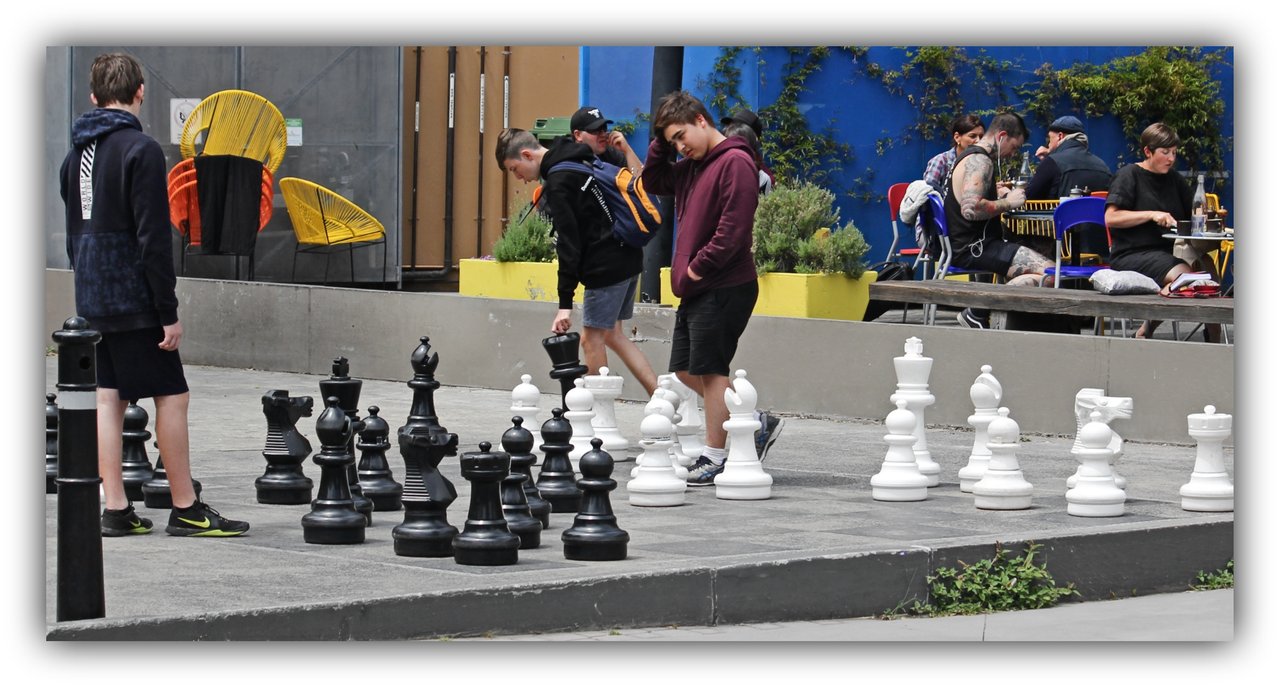
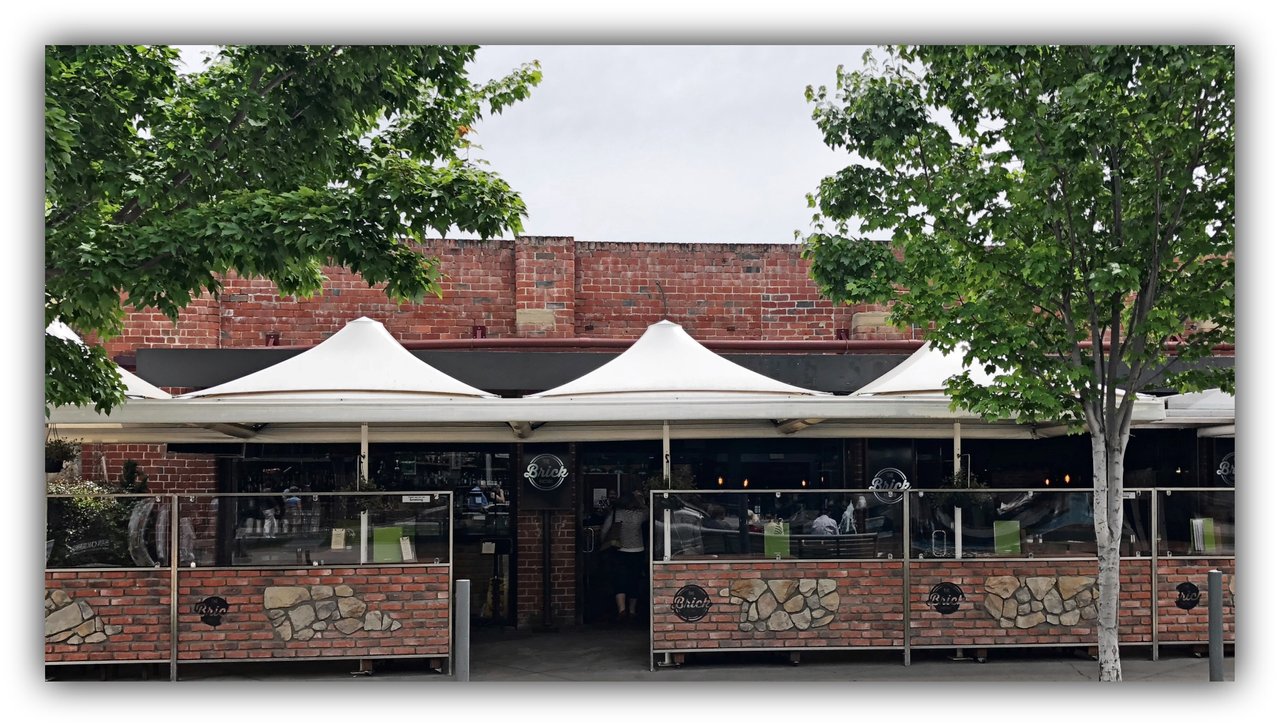

Marilyn Rabbitgirl poses for Paparazzi Dog at Salamanca Place (below.) These very impressive bronze statues take pride of place in the cobblestone square where locals and visitors gather to wine, dine and relax al fresco style or in the many cafes and restaurants which encircle these statues.
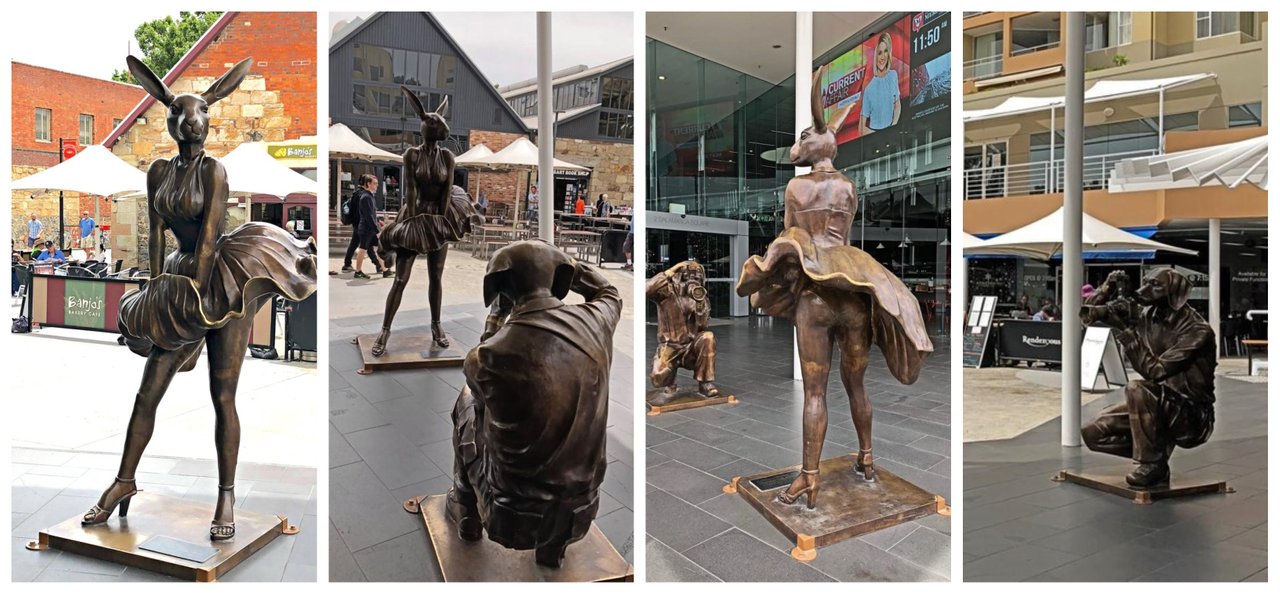
Marilyn Rabbitgirl and Paparazzi Dog are the work of Gillie and Marc, a husband and wife team who create in harmony to produce fine, contemporary works such as this. An extremely talented couple; Gillie and Marc have used inspired imagery to draw on and have incorporated the powerful connection between man and animal to produce many amazing dog/human hybrid creations.
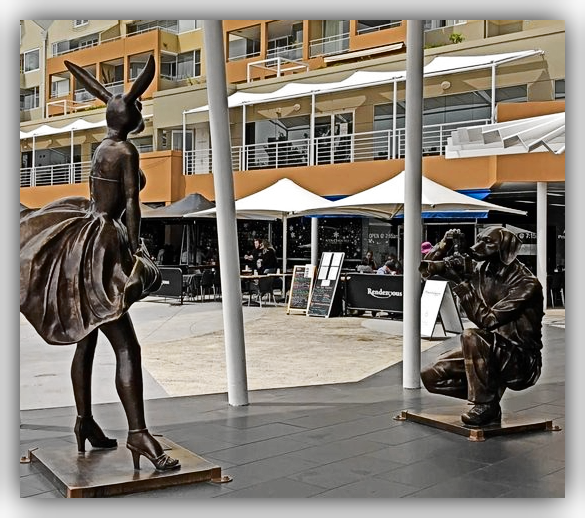 Their own unique and compelling love story is the basis for these unique works of art. They think outside the box, and in doing so, stimulate art lovers to challenge the status quo; to stretch their imagination and feel to that spiritual connection between man and animal.
Gillie and Marc's paintings and sculptures have received worldwide acclaim and their brand is now recognized nationally and internationally. This is the result of their remarkable and harmonious collaboration.
Source:
If your feet are tired and you still have a lot to see, I suggest you travel in style in one of these red, horse driven, carriages. The horses are so placid and very well trained; plus, you get the added bonus of great views from your comfortable seats.
Their own unique and compelling love story is the basis for these unique works of art. They think outside the box, and in doing so, stimulate art lovers to challenge the status quo; to stretch their imagination and feel to that spiritual connection between man and animal.
Gillie and Marc's paintings and sculptures have received worldwide acclaim and their brand is now recognized nationally and internationally. This is the result of their remarkable and harmonious collaboration.
Source:
If your feet are tired and you still have a lot to see, I suggest you travel in style in one of these red, horse driven, carriages. The horses are so placid and very well trained; plus, you get the added bonus of great views from your comfortable seats.
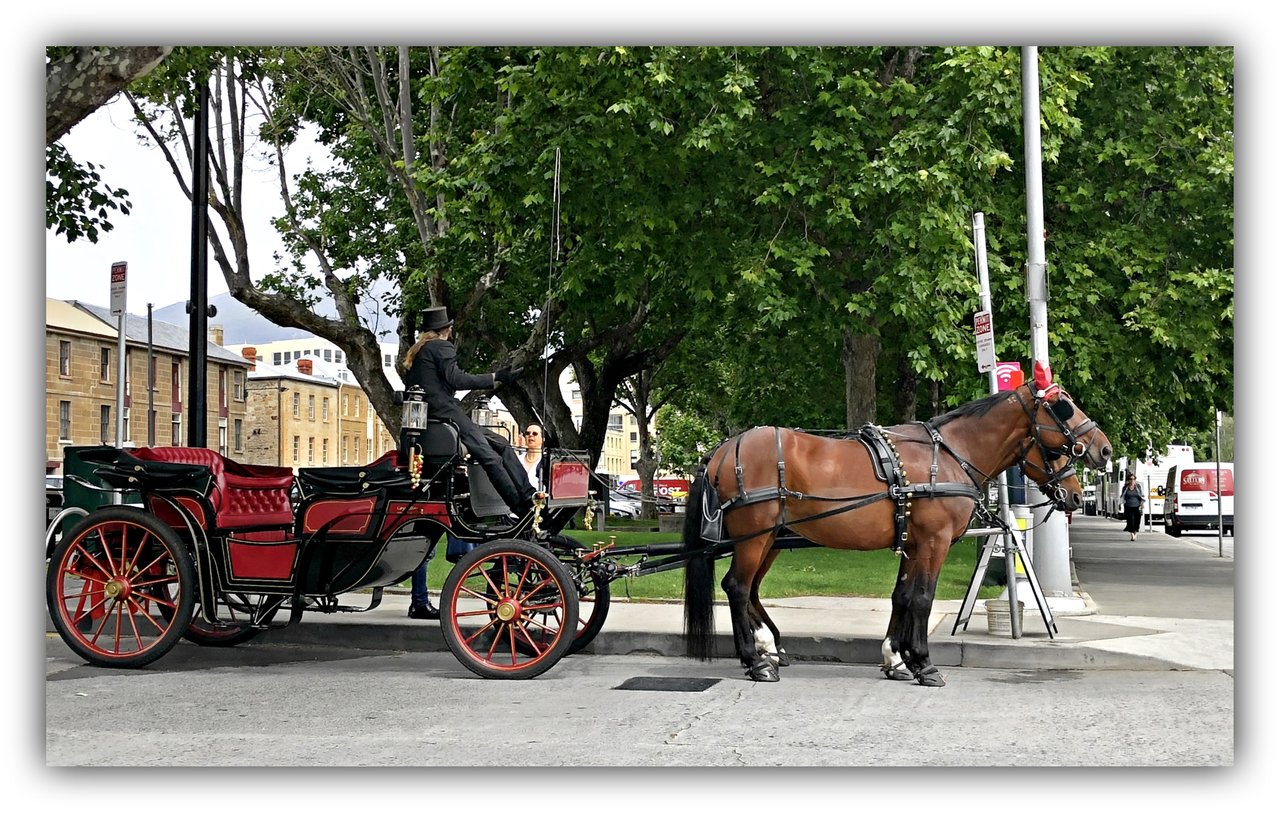
KELLY STREET.
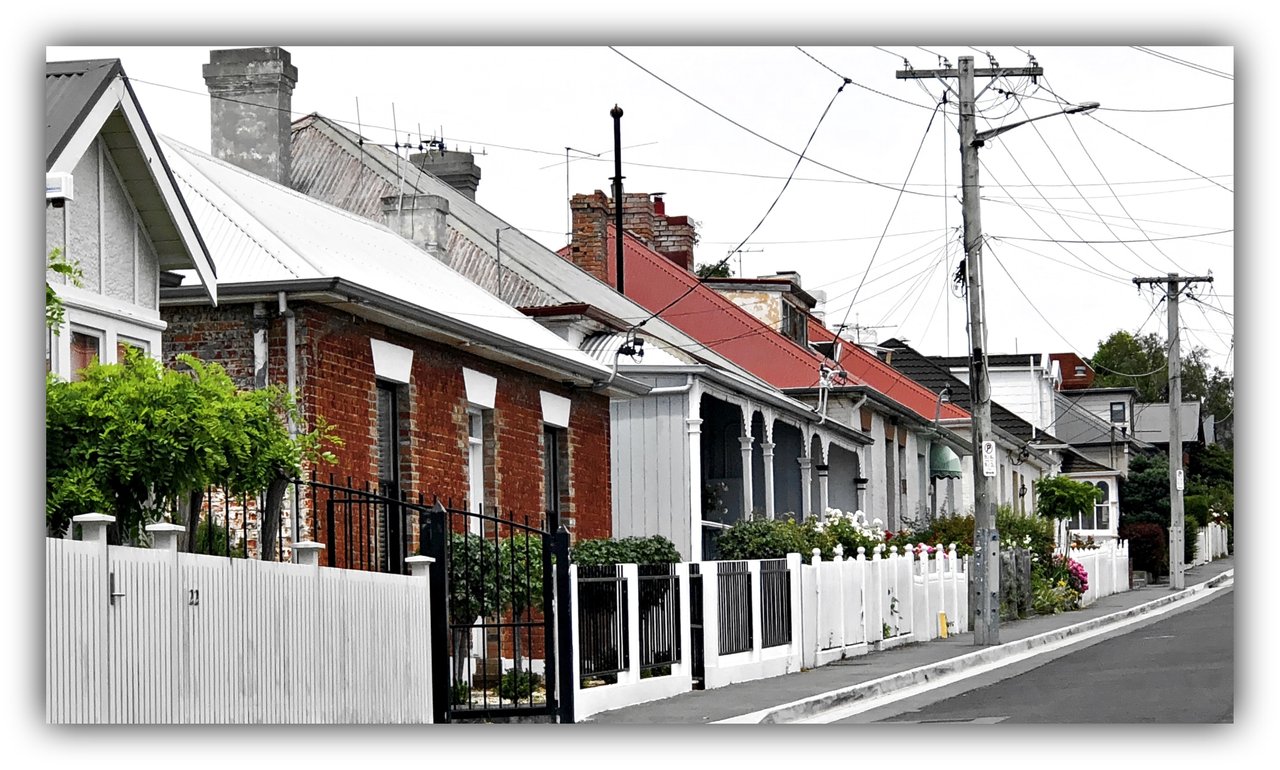
Kelly Street is a very popular tourist destination. It is lined on both sides with quaint cottages, neat picket fences and beautiful gardens to adorn their front yards.
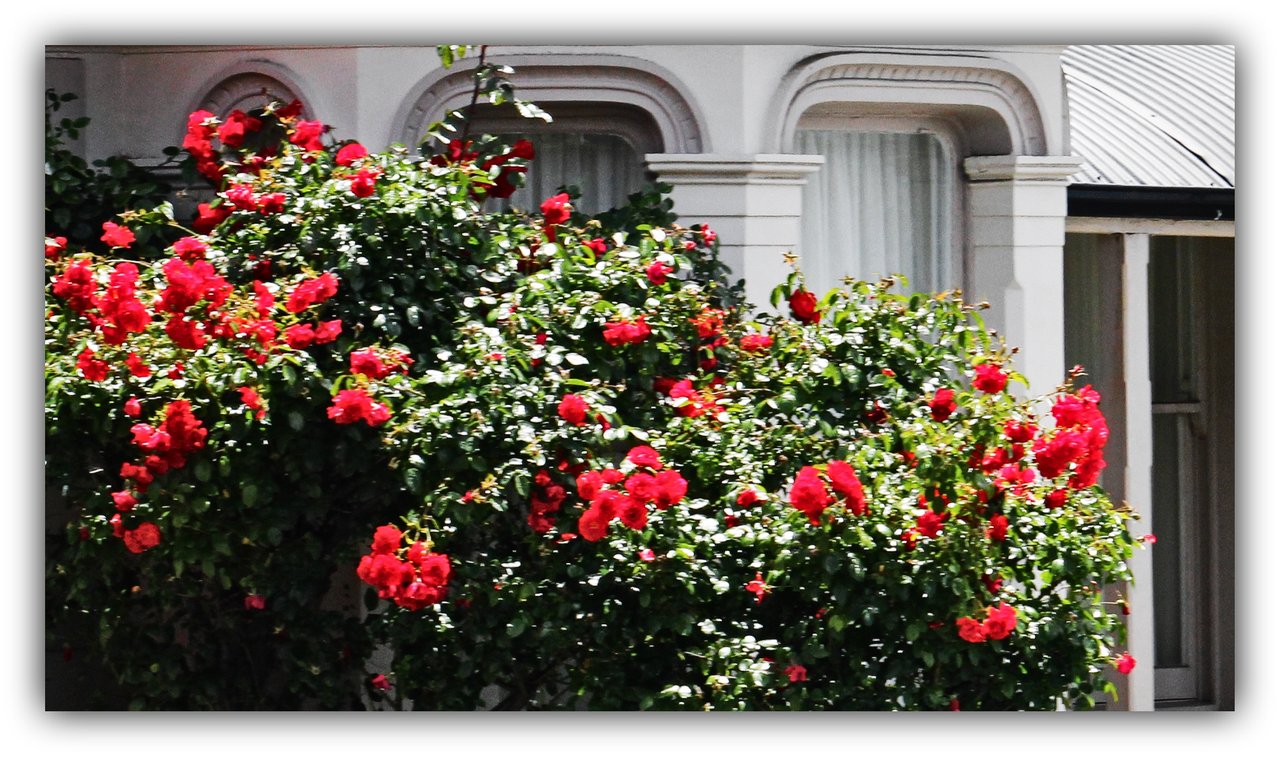
When walking, many approach this picturesque street via Kelly Steps which connect the suburb of Battery Point to the popular Salamanca Markets below.

Kelly Steps, were constructed in 1839, by cutting into the sandstone cliffs of Battery Point. Kelly Street was named after James Kelly who circumnavigated Tasmania in 1816 in an open, 5-oared whaling boat. As a matter of interest, James Kelly's son was the famous bushranger, Ned Kelly.
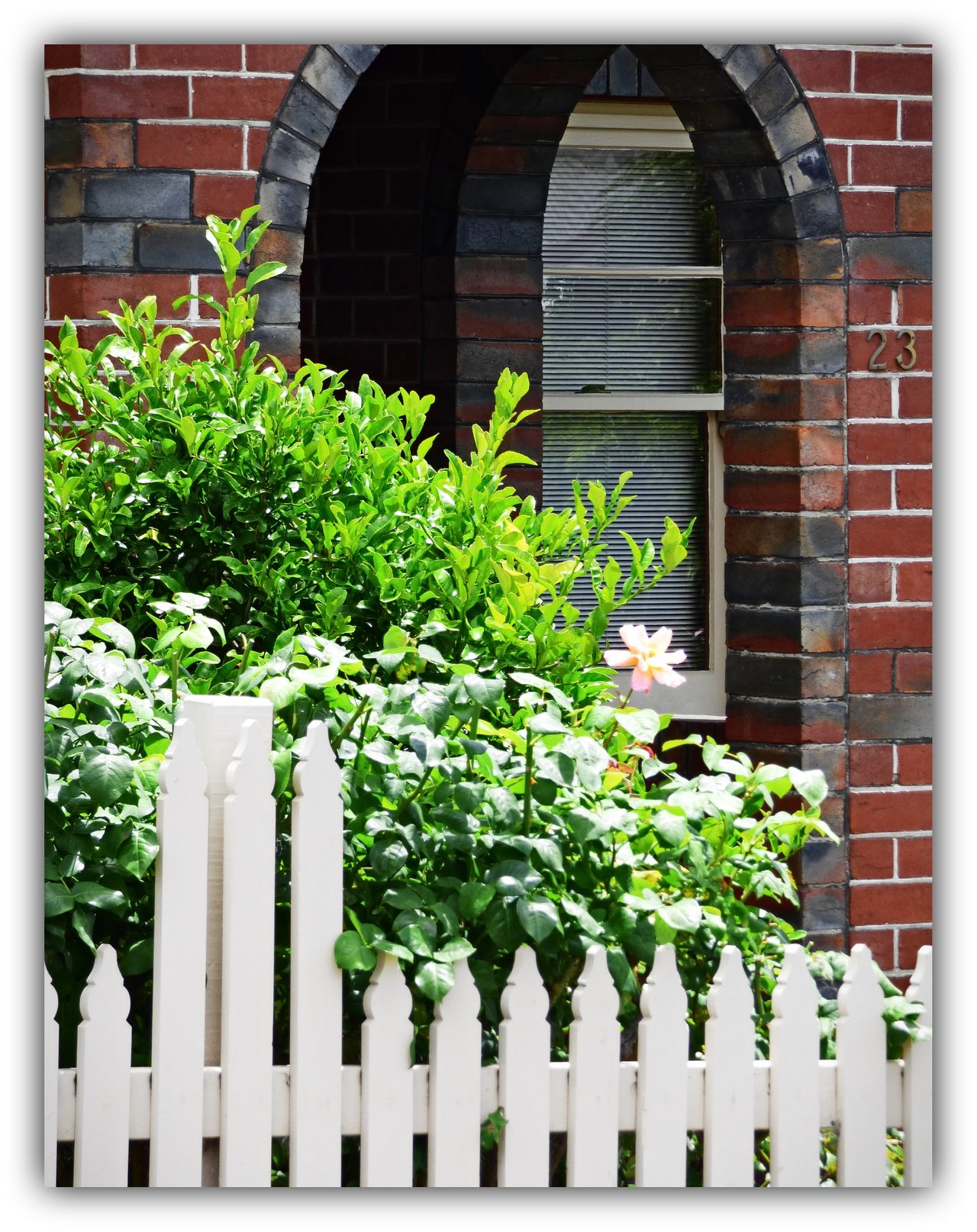
Captain Kelly made his living from whaling and sealing and was quite the dominant figure in seafaring and port activities in Hobarts formative years. Kelly subdivided this land in Battery Point into small allotments in order to build cottages for workers employed in the shipping, sail-making, wharfing, and blacksmith industries.
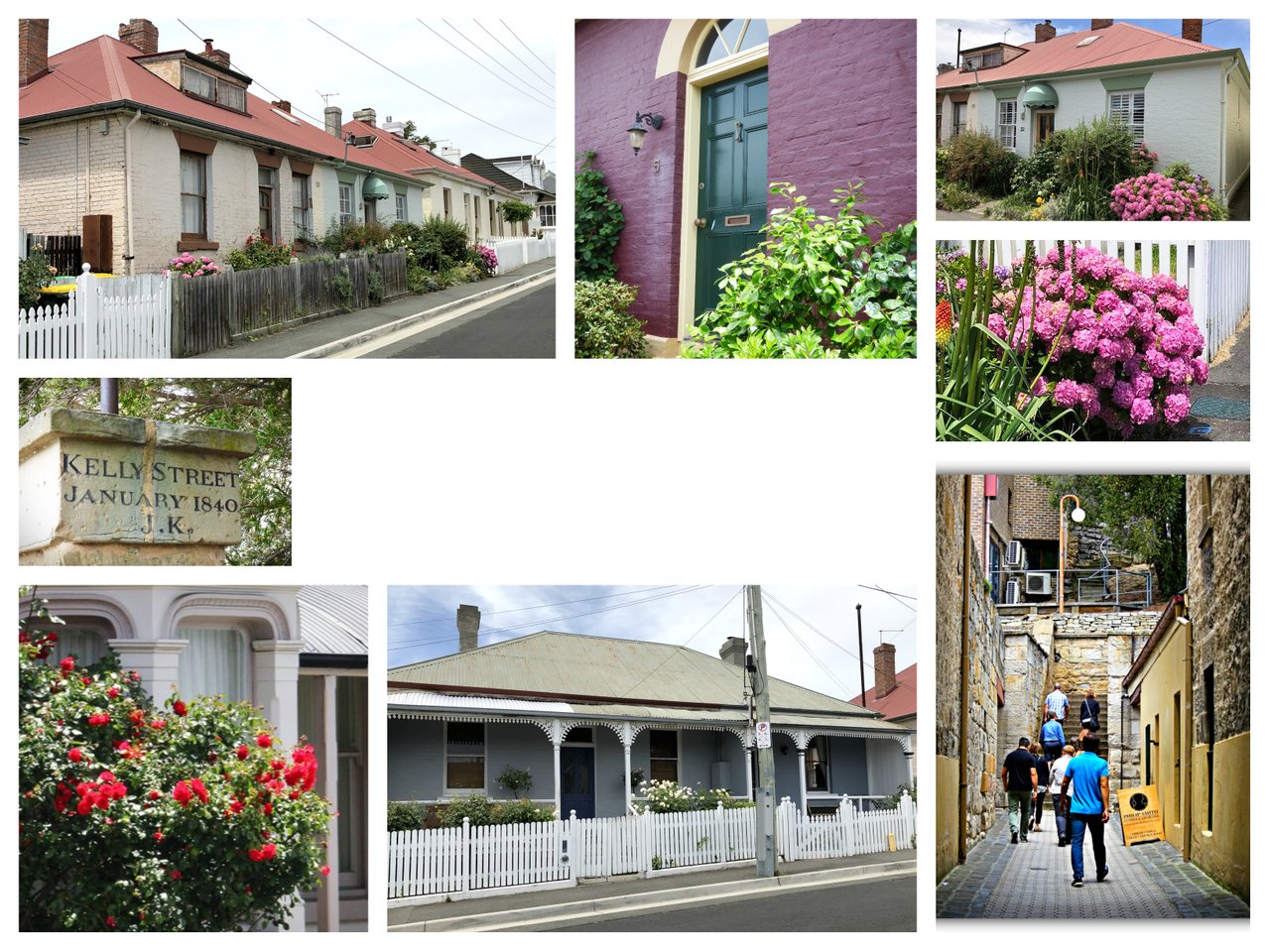
Pub owners ship chandlers and housekeepers also needed accommodation with easy access to the waterfront. It was often a struggle for families to survive and many married couples had large families so it would have been a tight fit for them. Hardworking, resilient women juggled parenting by taking in washing and sewing or by working in the various fruit preserving, canning and juicing enterprises scattered along the waterfront.
HOBART MUSEUM:
Another fascinating place to visit in the heart of Hobart is the Museum. All manner of interesting and valuable items have been collected, stored, encased, polished or stuffed in the Tasmanian Museum. This museum was established by the Royal Society of Tasmania which happens to be the oldest Royal Society outside of England..
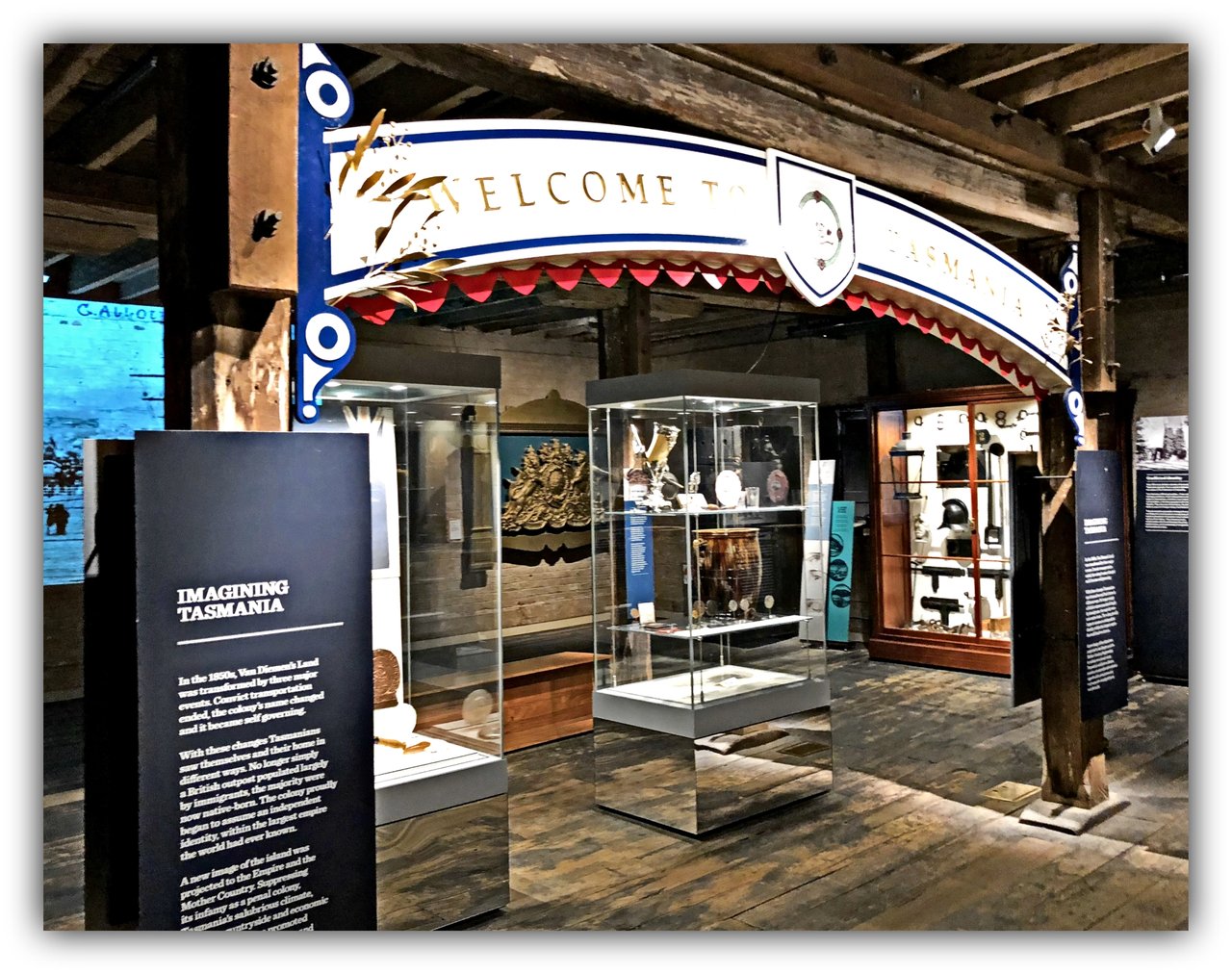
The sign at the entrance of the museum reads:
"IMAGINING TASMANIA."
In the 1850's Van Diemen's land was transformed by three major events. Convict transportation ended, the Colony name changed and it became self governing.
With these changes, Tasmanian's saw themselves and their home in different ways. No longer simply a British outpost populated largely by immigrants, the majority were now native born.
The Colony proudly began to assume an independent identity within the largest empire the world had ever known. A new image of the island was projected to the empire and the Mother Country...….!
Meet one of Tasmania's most famous icons......The Tasmanian Devil. He is just one of many animals or birds that have gone through the process of Taxidermy in order to present the native fauna to the public in this most realistic manner.
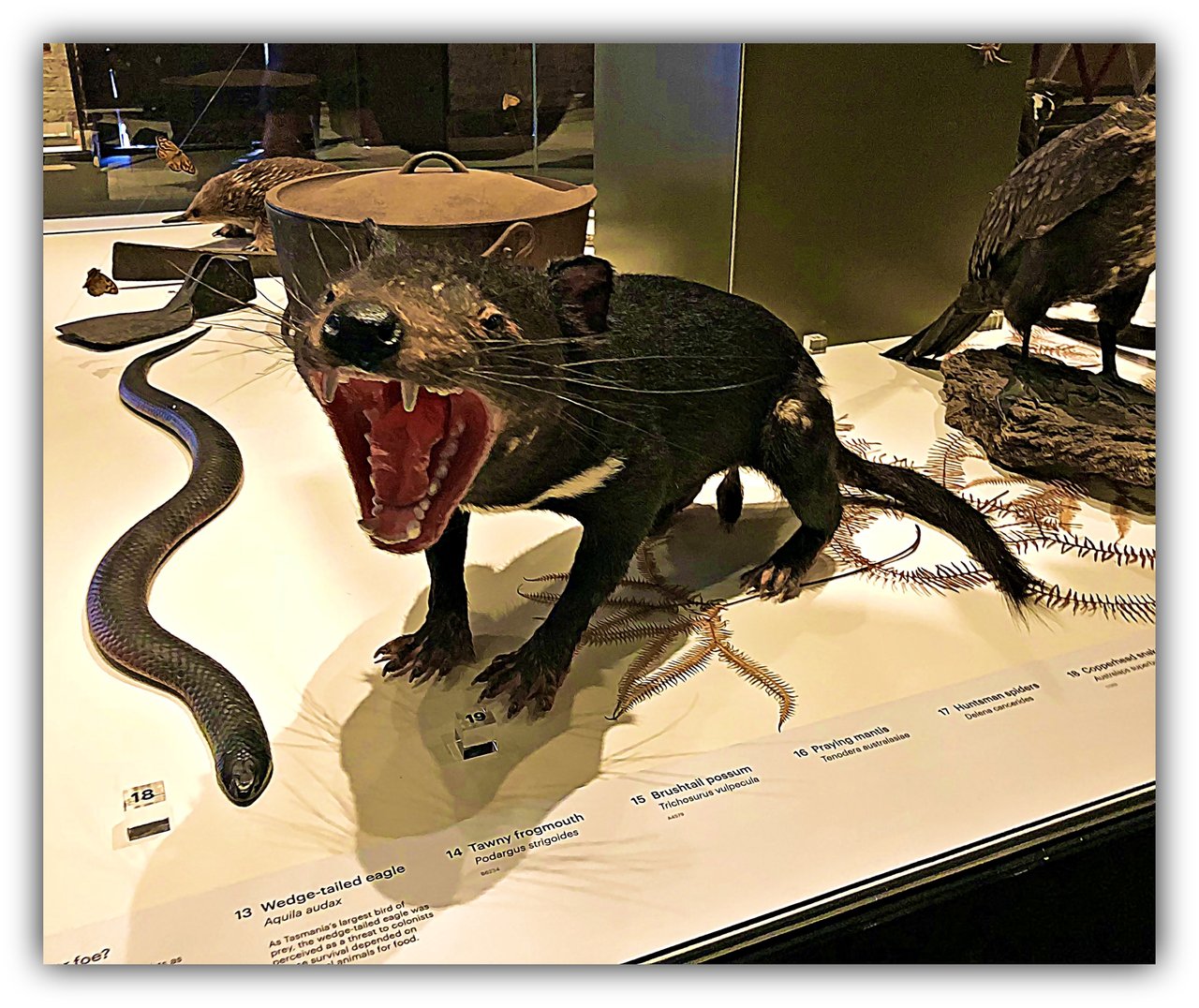
Tasmanian devils were once known as implacably vicious. Dingoes used to hunt them and so did humans due to their threat to livestock. Their fur was valued also but the devils eventually became an endangered species and are therefore now protected.
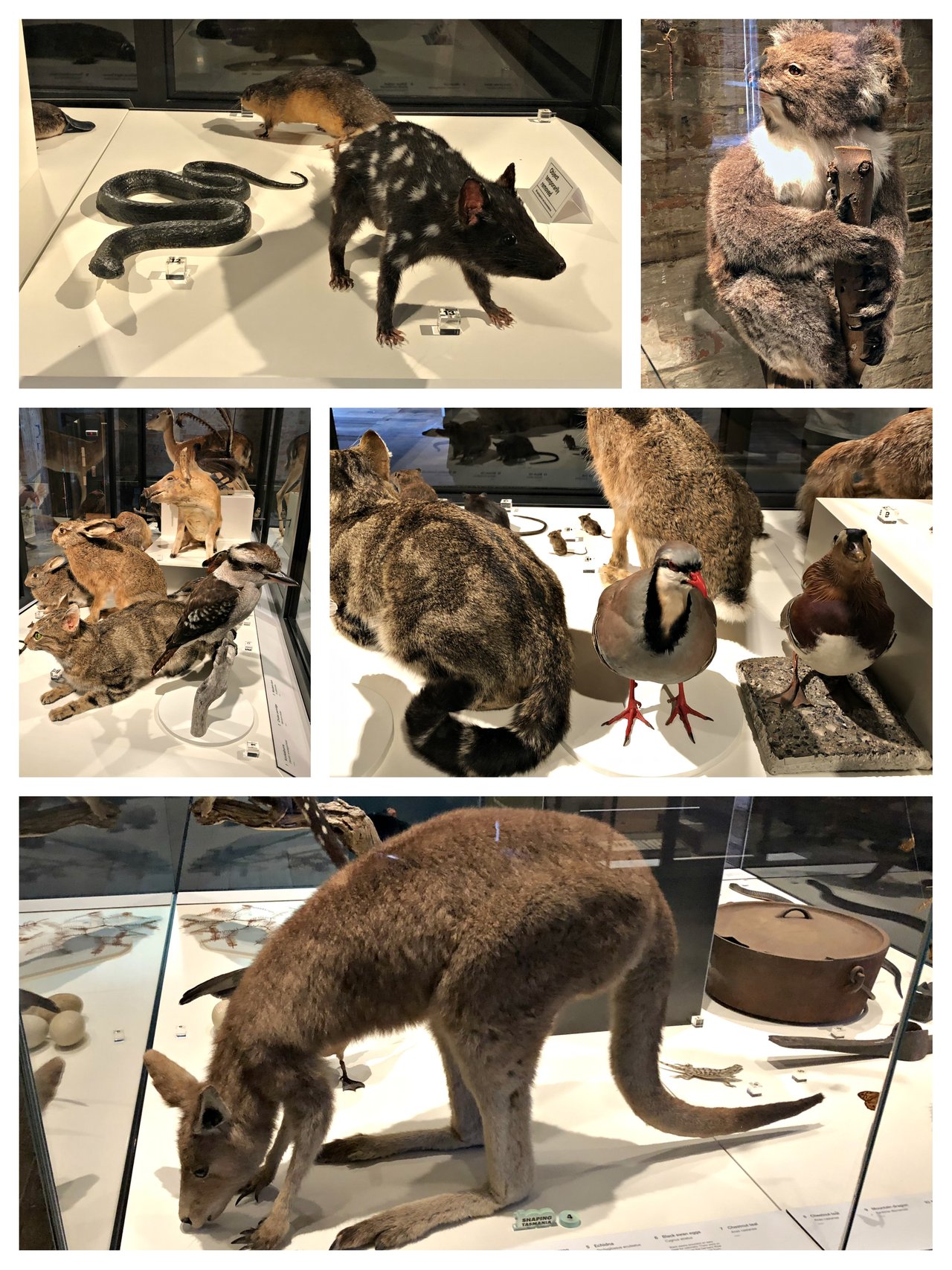
A very impressive navy blue carriage was on display at the museum.
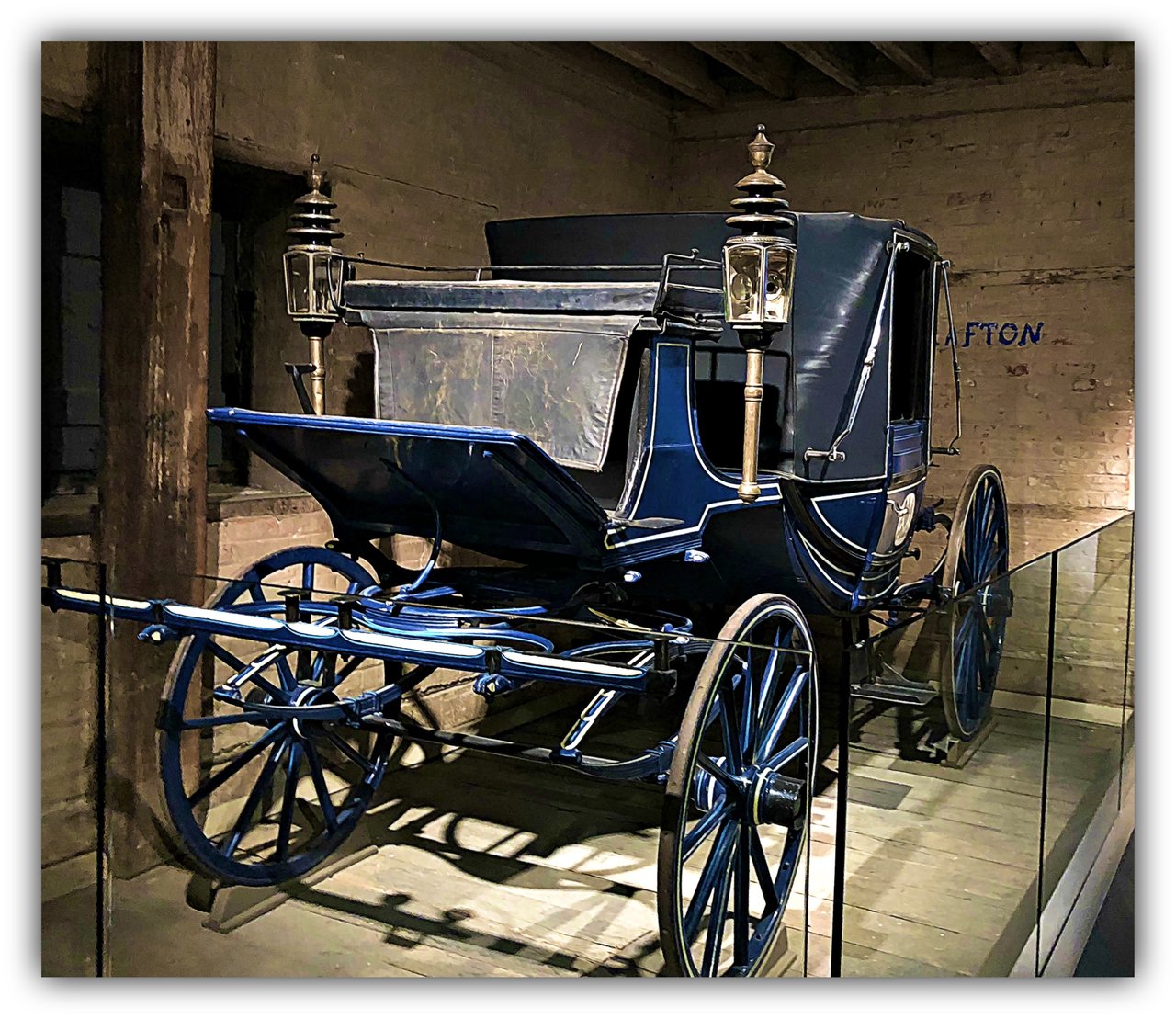
Many cherished antiques were on show; the more valuable ones encased in glass cabinets.
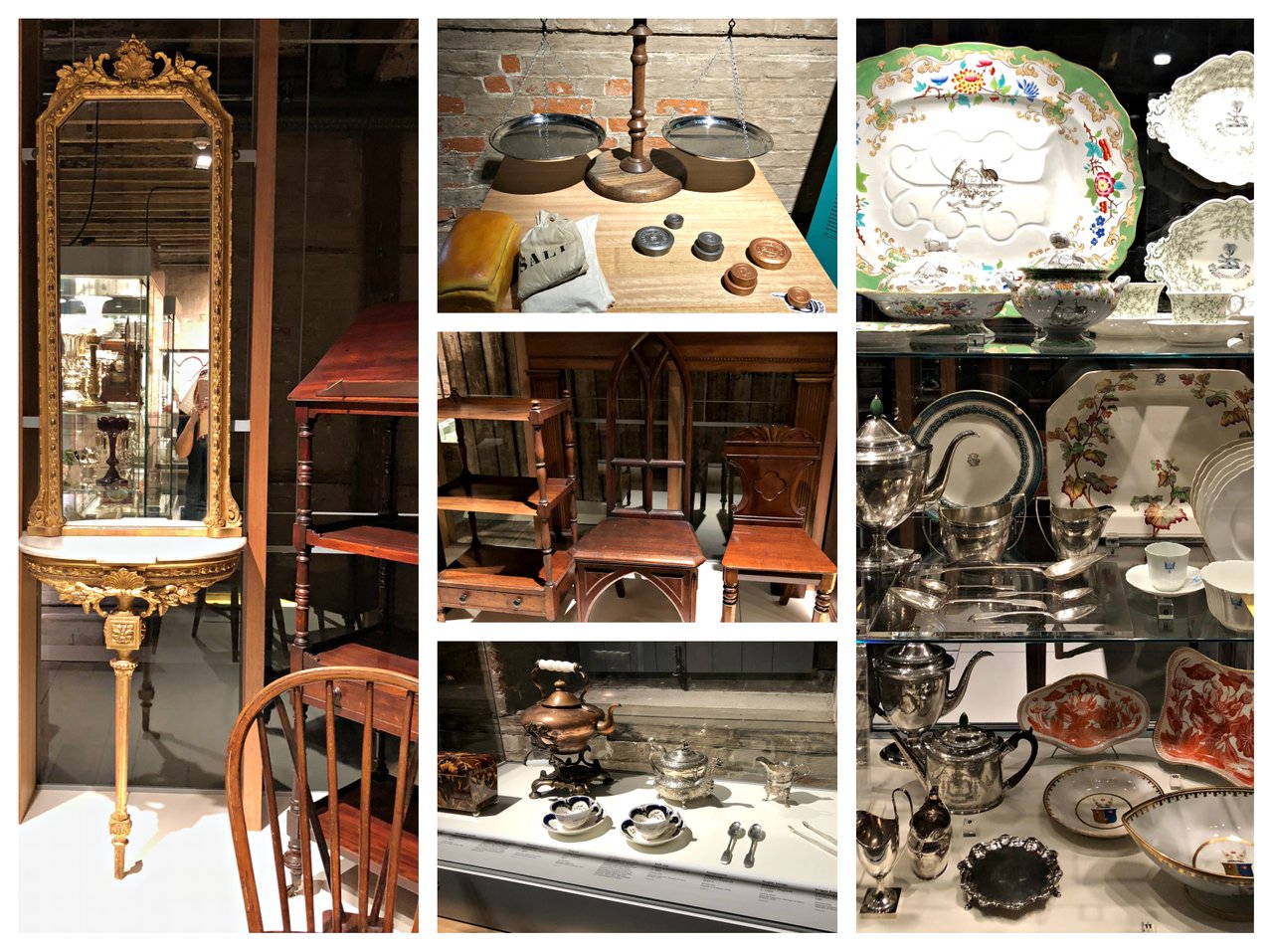
The magnificent St David's Cathedral is situated at the corner of Macquarie and Murray Streets in Hobart, and this location is in an area which is considered to be the finest Georgian streetscape in Australia. This building is on the register of the National Estate.
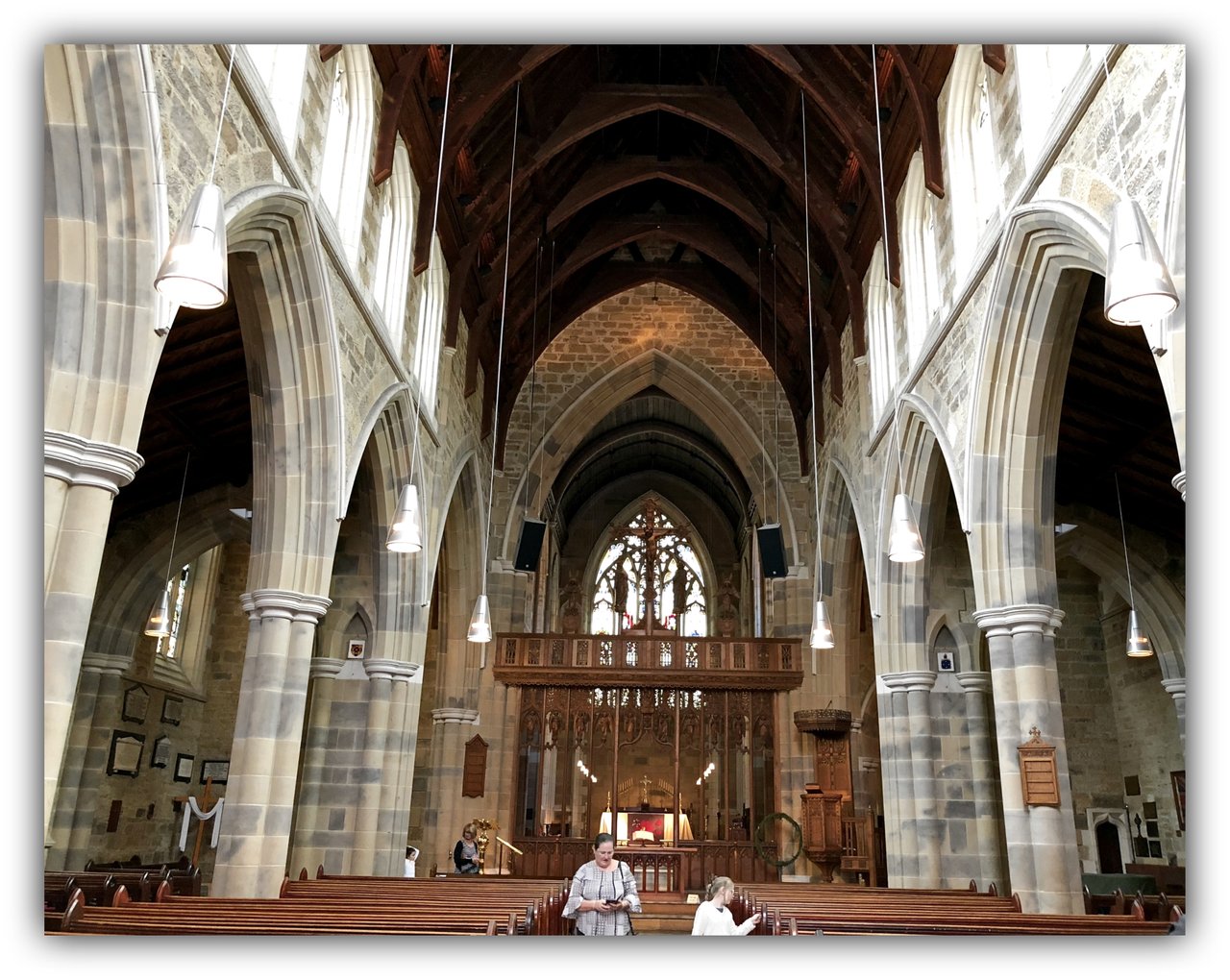
When Hobart was declared a city in 1842, the existing St.David’s Church became St. David’s Cathedral. The first foundation stone was laid for the original church on February 9th, 1817. The church took a very long time to build but finally on the 9th January 1823, St. David’s church was consecrated.
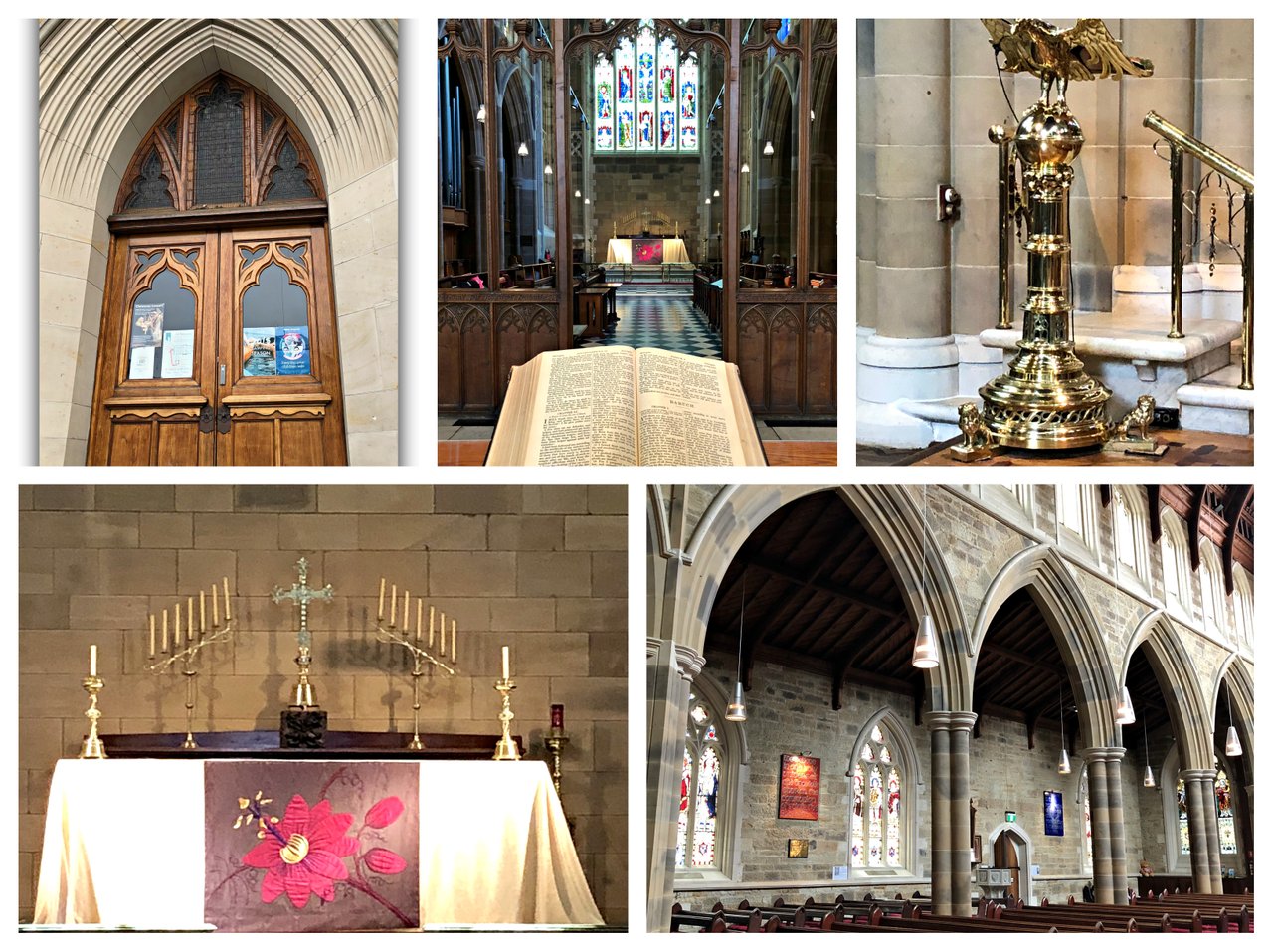
The steeple was deemed unsafe in 1835 and removed but in March 1835 a tower named “The Pepper Pot,’ was erected to replace it.
A second St. David’s church began when the first foundation stone was laid down in January 1868. The nave was constructed in 1872 and the Chancel was built between 1891-94. The bell tower was completed in October 1936 and has a peal of 10 bells with newer bells being installed in 2005.
The arcaded entrance with its large west window, the buttressed turrets and the square tower made of Oatlands stone are amazing external features.
Source #1:
Source #2:
Touring the city on the top of a double decker bus deck is the ideal spot for keen sightseers and photographers. On a fine day, passengers can enjoy uninterrupted views from many different angles.
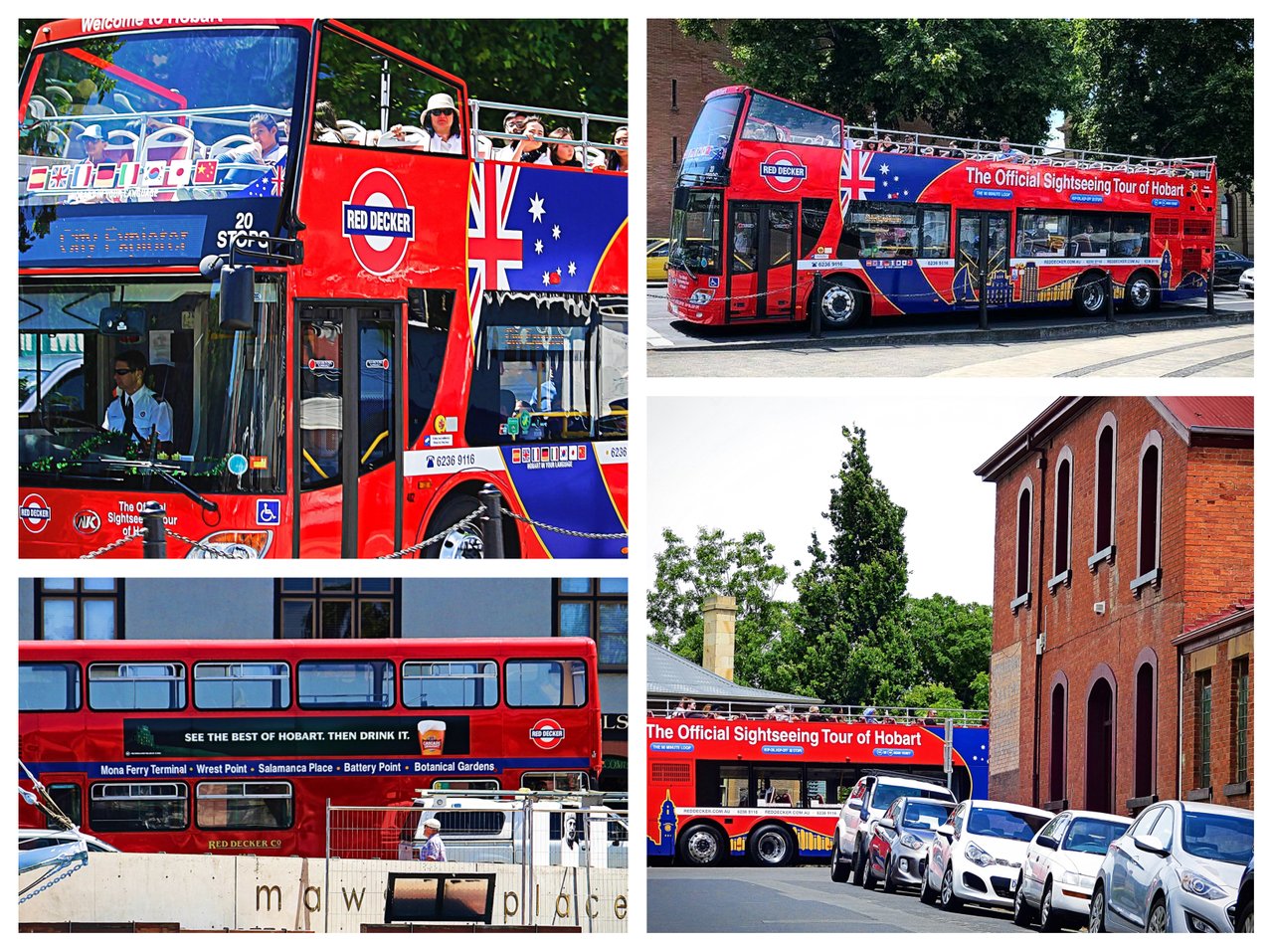
A little bit of trivia......Did you know that a blue whale is approximately as long as three double decker buses?
That’s HUGE!
The next few images are dedicated to the marvellous architecture found around the Hobart area. I hope I have provided enough to give you a good representation of what is available.
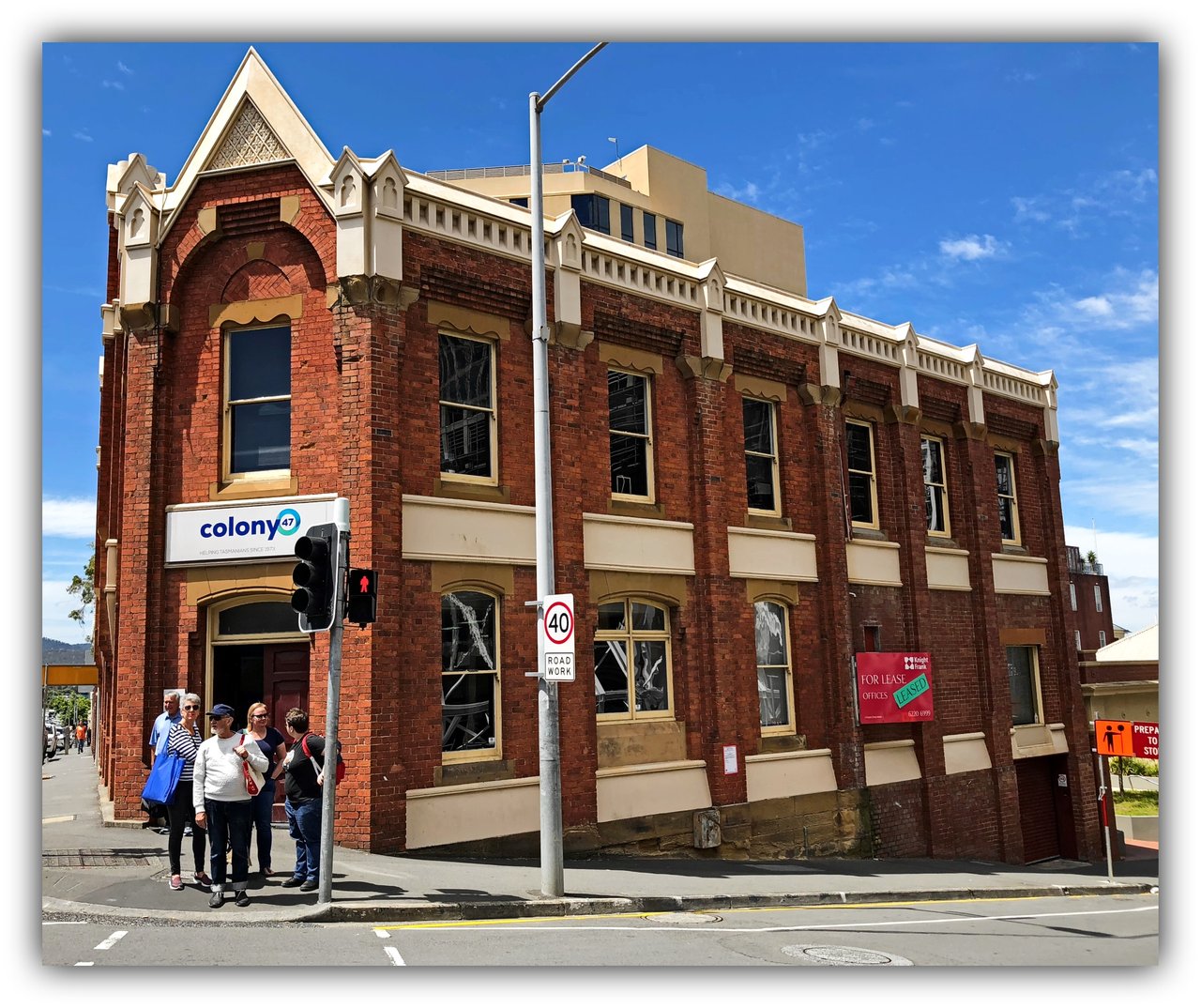
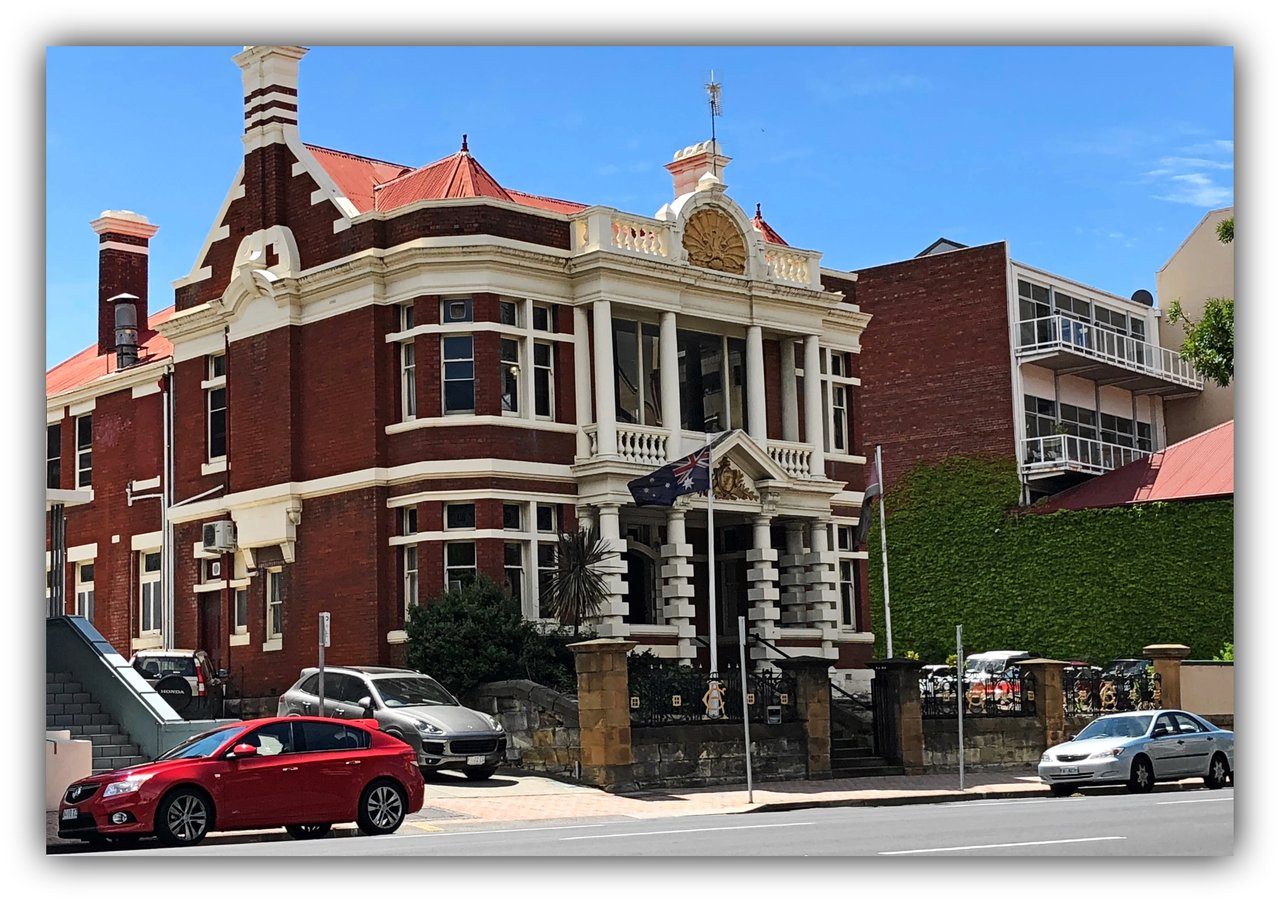
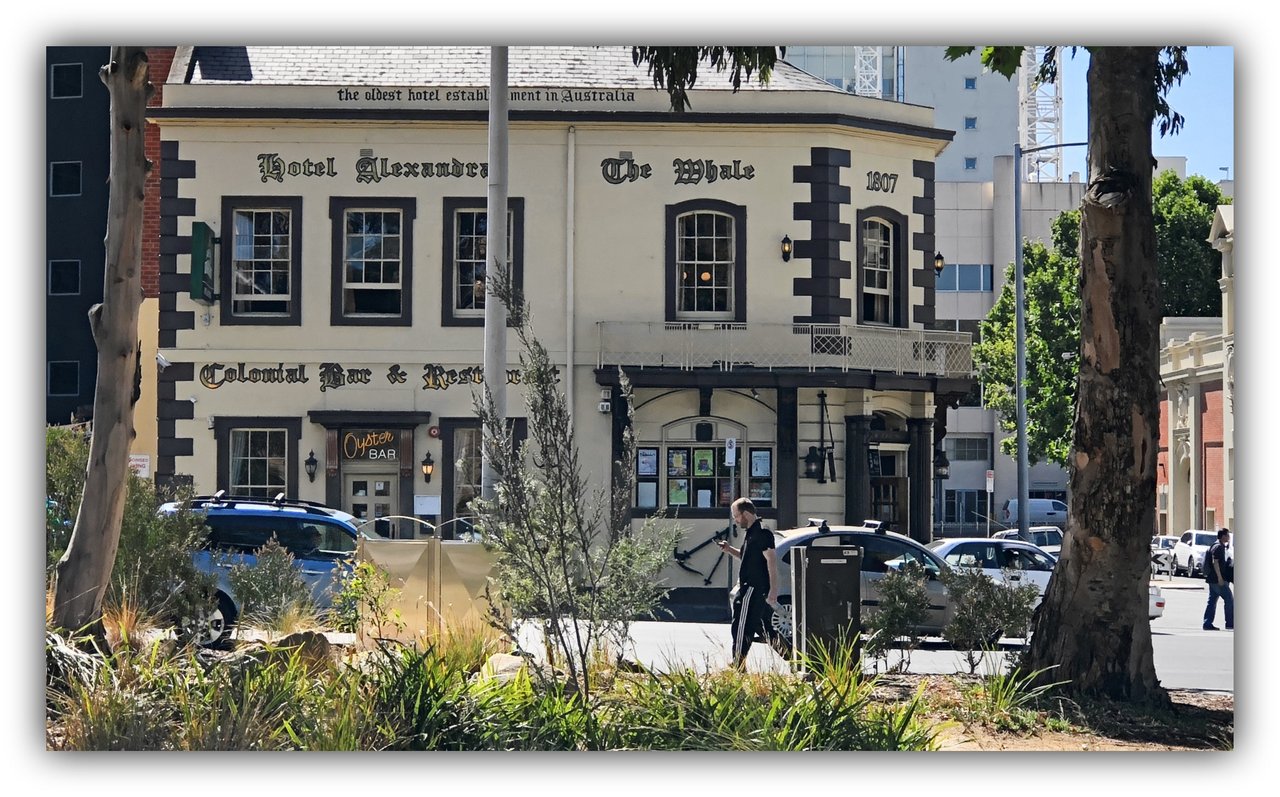



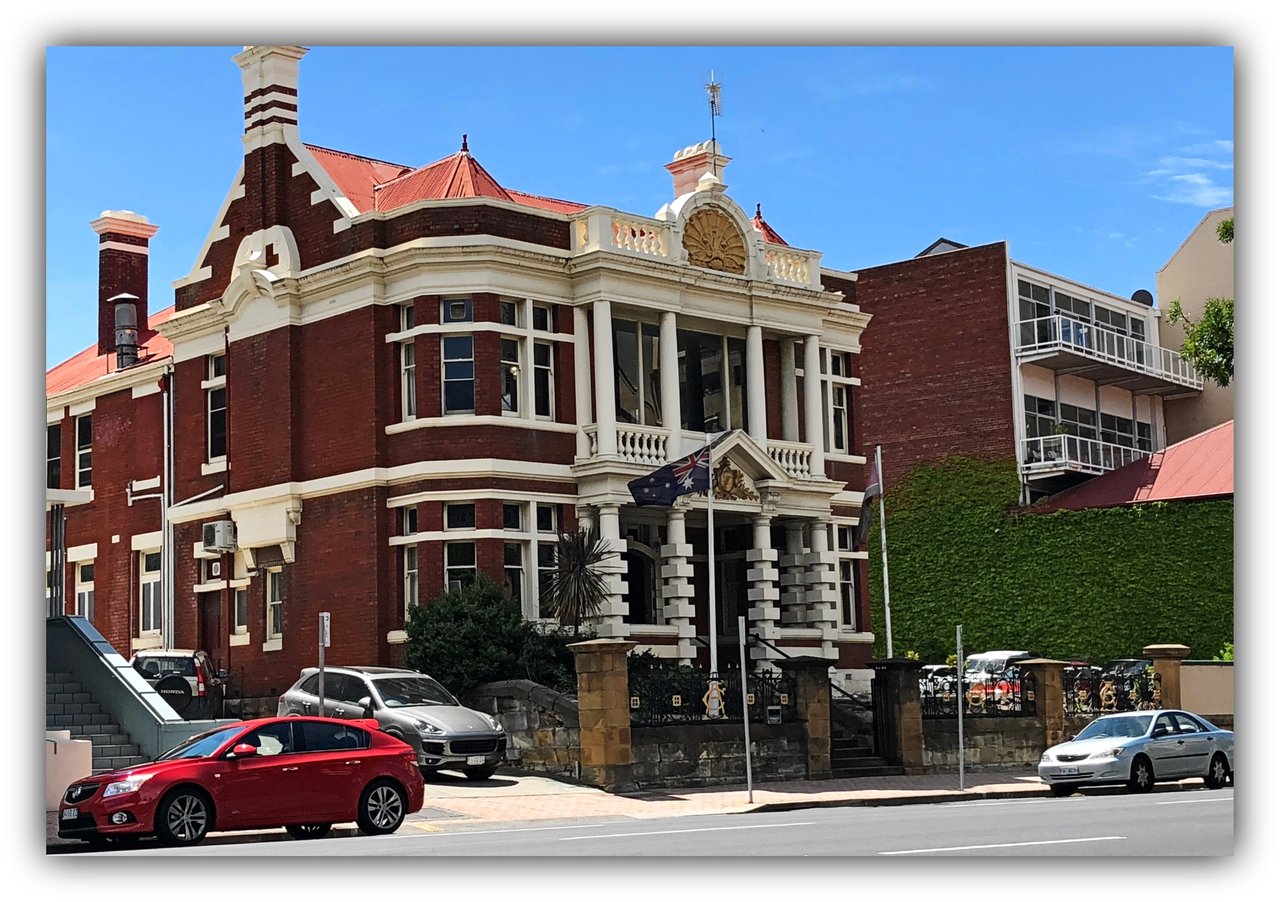
St David's Park is a picturesque oasis close to the center of the city. It is a formal English style park which dates from the beginning of European settlement in 1804.
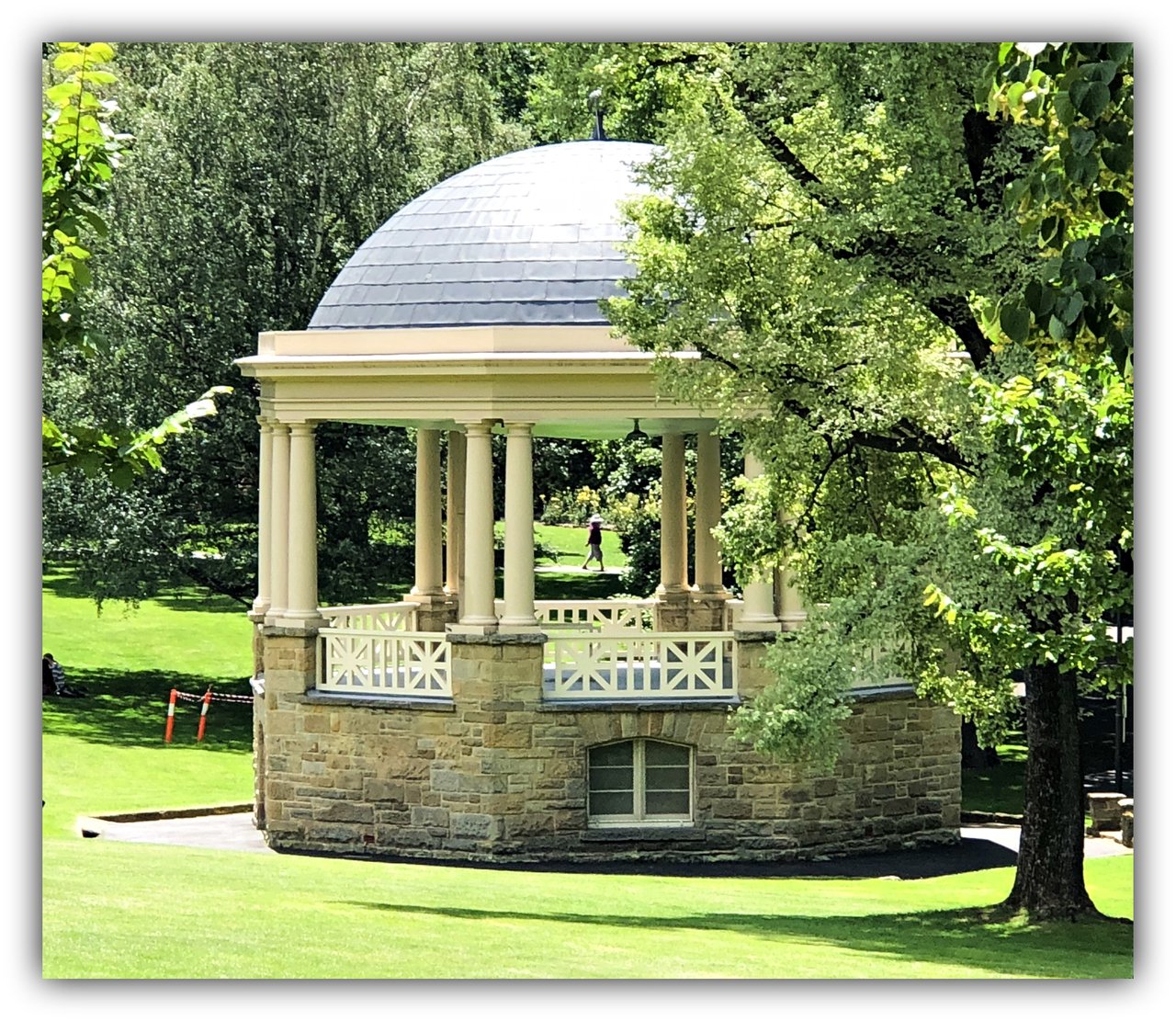
It is the site of the first burial ground in Tasmania, which was marked out by Lieutenant-Govenor David Collins and the Reverend Robert Knopwood in April 1804. Collins was buried there himself in March 1810.
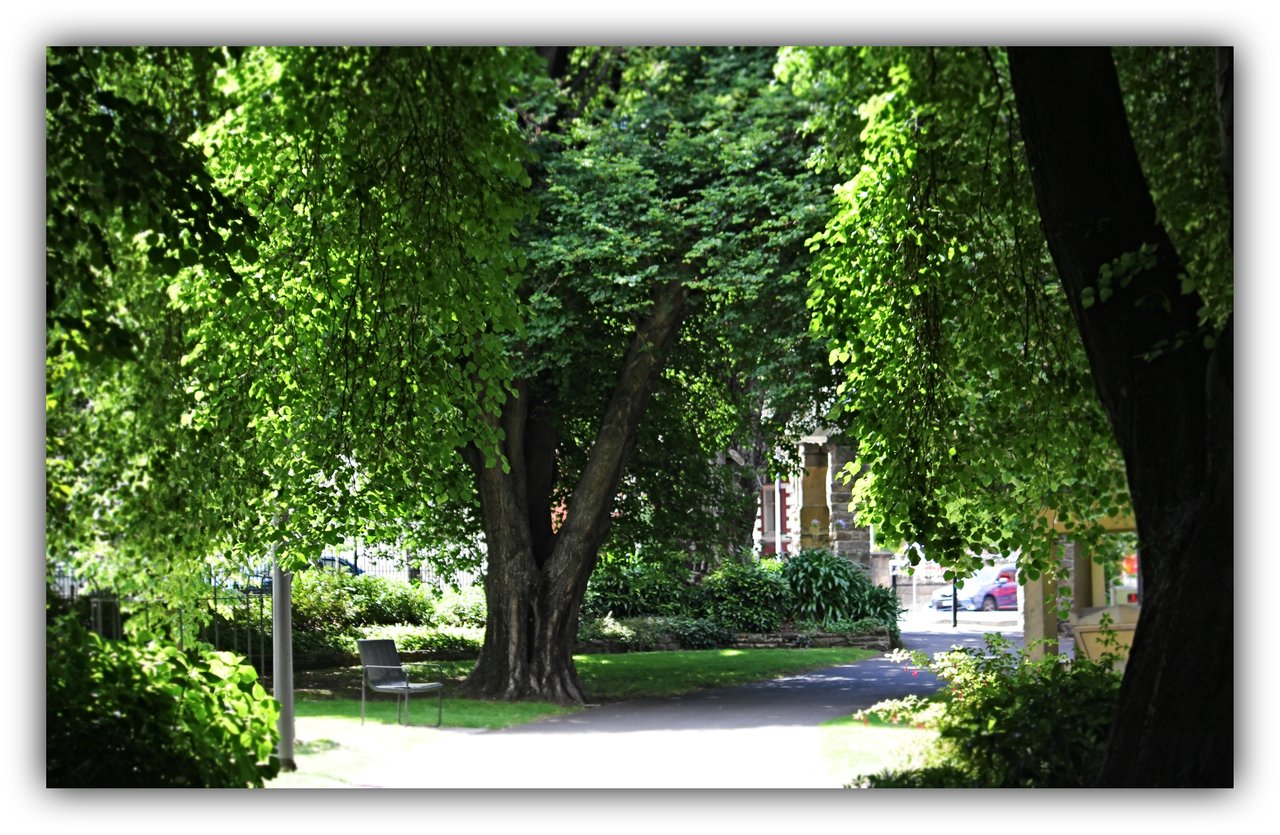
It ceased to be used as a burial ground in 1872 and in 1919, the land was handed over to the City Council to be used as a recreational area. One of the main features today, is the memorial wall which consists of many of the original headstones from its earlier days.
Source:
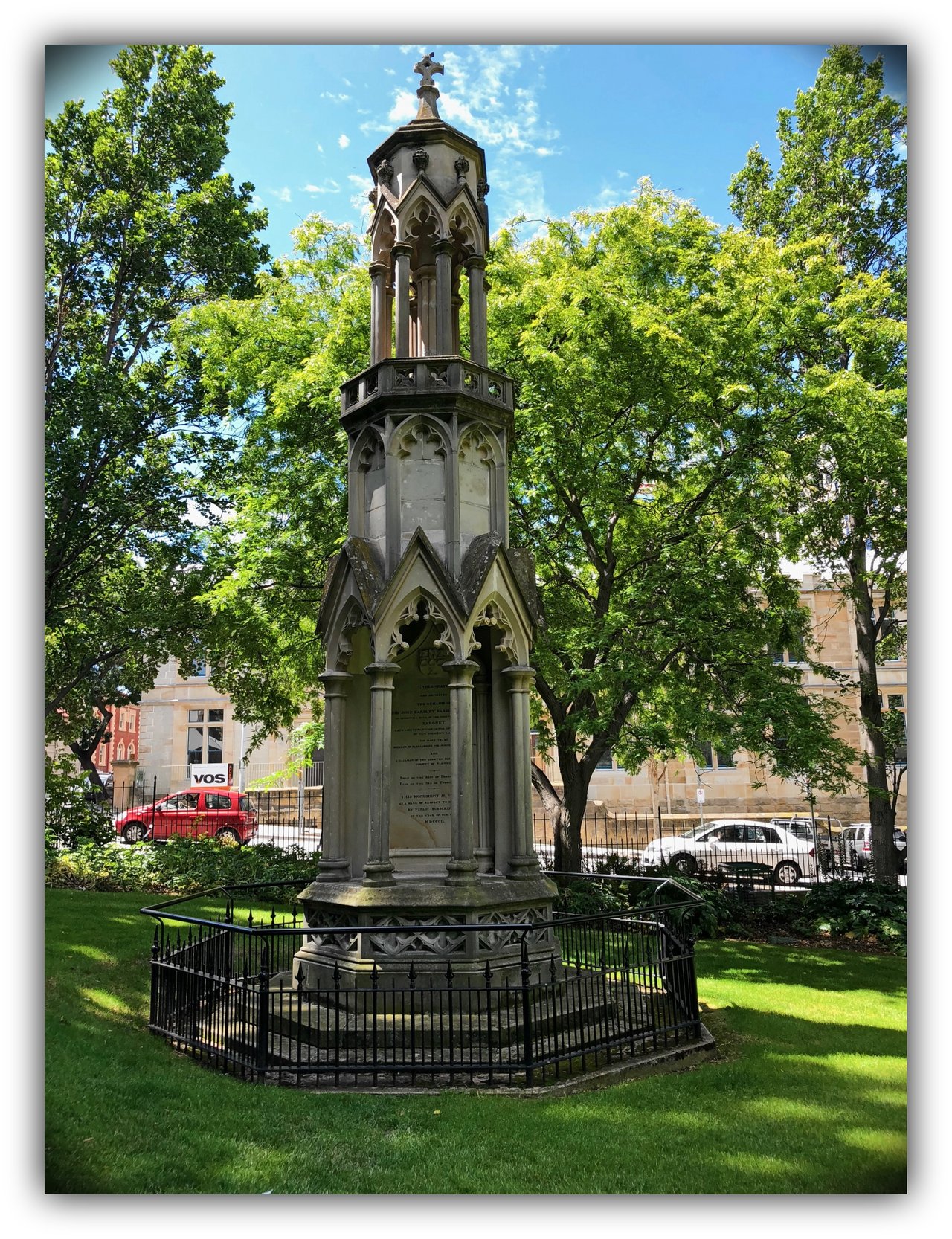
CASCADES BREWERY, HOBART.
The Cascade Brewery Company was established in 1824, and is located at the base of Mount Wellington. It is Australia's oldest operating brewery and is famous for its range of exceptional beers both in Tasmania and 'the mainland' of Australia.
This history of Cascade Pale Ale goes back all the way to 1832 and is Australia's longest continuously brewed beer. Their award winning Cascade Stout is extremely popular and their Cascade Premium Light beer has the honour of being Australia's favourite light beer. Complementing these brews are other Tasmanian stalwarts such as; Cascade Draught, Cascade Bitter and Cascade Lager.
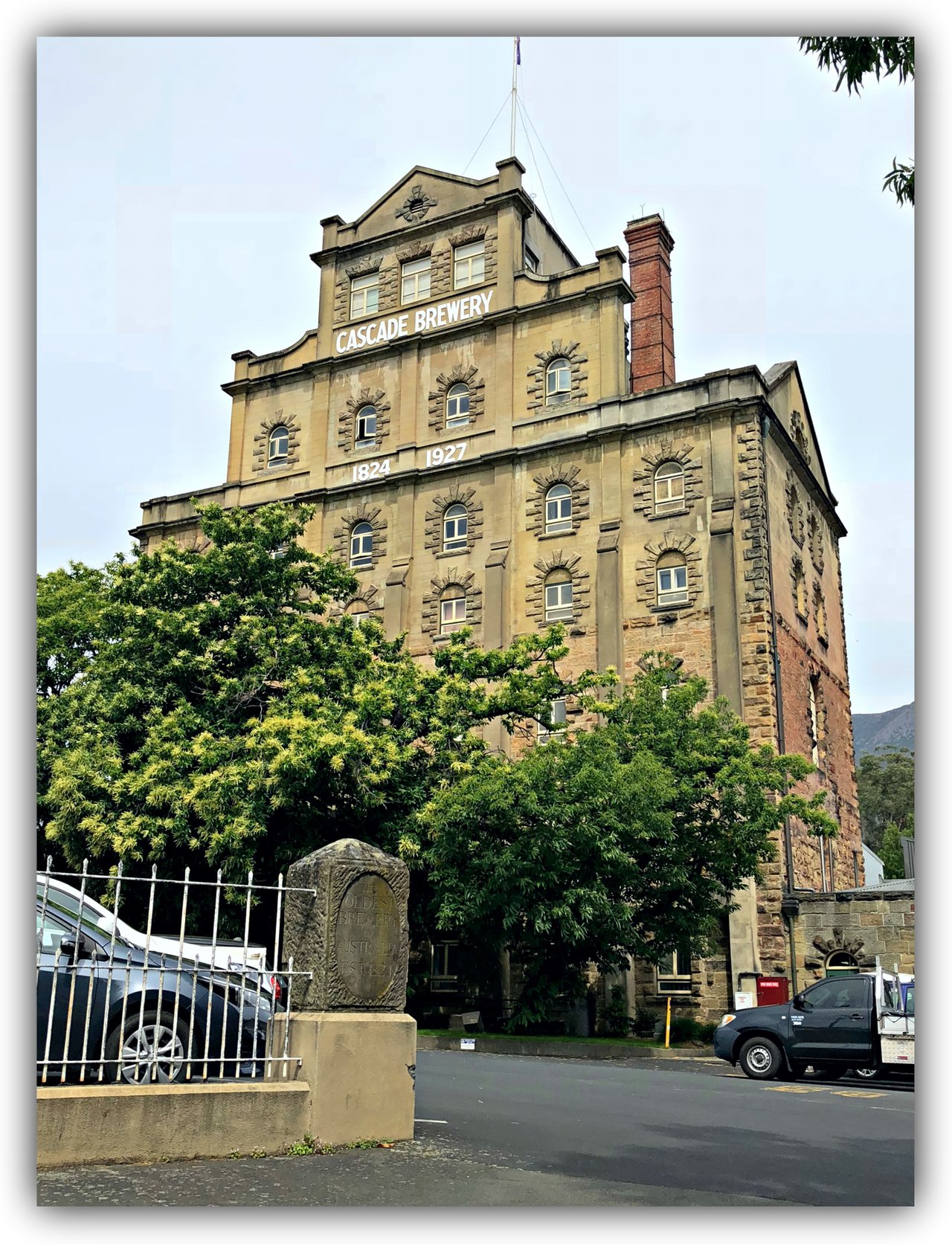
Cascades Brewery progressed from humble beginnings as a sawmilling operation in the early days to now being the country's oldest operating brewery.
English settlers, Peter Degraves and his brother-in-law, Major McIntosh founded the business. Shortly after arriving in Tasmania’s in 1824, Degraves made plans for the Cascade Brewery during a stint in the old Hobart Gaol. He, like many other English immigrants served time for an offence committed, prior to emigrating.
Degraves wanted to capitalize on the pure waters which flowed down from Mount Wellington and so he devised a strategy for a ground breaking brewery. When he was released from Gaol in 1831, Degraves turned his vision into reality by forming the first Cascade Brewery Co and his genuine and pure beer began to be sold in December 1832.
The Cascade Brewery has overcome many challenges over the years but none of them prevented a constant supply of quality beer reaching the thirsty customers of Tasmania. But in 1967, a major bushfire swept through southern Tasmania. Many homes and properties were ruined as fire tore through the Cascade Brewery.
The Cascade team were not deterred. Instead, they vowed to rebuild the shell of a brewery and be back in operation within three months. With the willing help of people of Hobart, three months and one day after the fires on April 3rd, brewing recommenced.
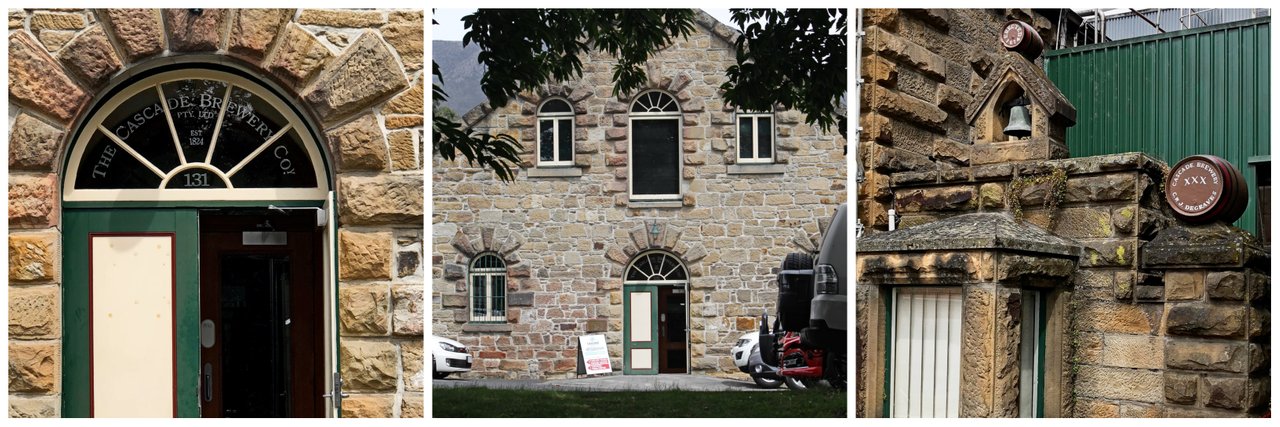
Today, Cascade continues to uphold Degraves' values, brewing beers "that cannot be excelled" behind the gothic sandstone façade of this iconic brewery. Pure Tasmanian water sourced from Mount Wellington and Tasmanian grown hops and barley continue to form the backbone of our brews.
From the classic Tasmanian range of Draught, "Red" (Bitter) and "Blue" (Lager) to the class leading Pale Ale and Stout and ever popular Cascade Premium Light, Cascade remains at the forefront of Australian brewing after over 170 years of honing its craft.
The Cascade brewery is also the home of Mercury Cider producing a range of delicious Tasmanian ciders. However, the range of cordials and soft drinks now produced under the Cascade brand, which were originally produced by Cascade Brewery Co., are no longer associated with the brewery.
Source:
MT. WELLINGTON:
Mt Wellington, at 1271 metres high, towers over the city of Hobart. The mountain provides an impressive backdrop to Hobart and the Derwent River. Before the Pinnacle Road was built in 1930, access to the summit was achieved by walking. Today it takes approximately twenty minutes by car to reach the top where the spectacular views are well worth seeing.
Keen cyclists use the Mt. Wellington Descent Cycling Tours and for those who prefer to walk, there is an easy track up the slopes of the mountain. Many amazing rock formations are admired along the way, such as the “Organ Pipes.”
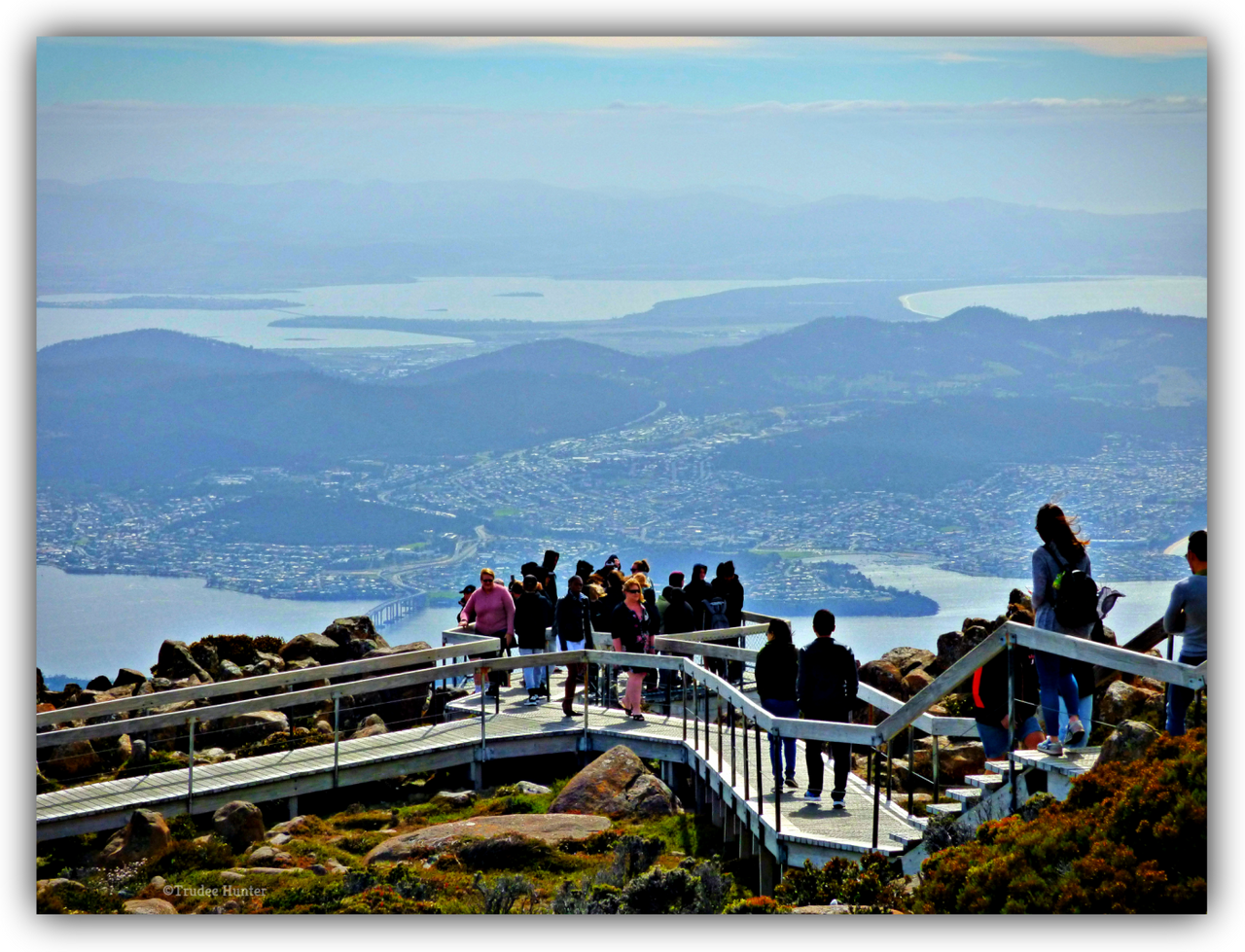
The terrain is quite rugged as the mountain is covered with snow during winter and strong gusty winds ensure that only the hardiest of plants or shrubs survive at the highest areas. Thankfully, there is an excellent shelter and viewing platform at the top of the mountain. For over a century, Mt. Wellington was exploited for its natural resources such as stone, food, ice, skins, ferns and seeds but timber was the main commodity.
The mountain cliffs, fields, swamps and gullies provide an ideal habitat for flora and fauna. In fact, botanists flooded to the area during the 19th Century. They sent many samples of flora and fauna to England to be examined and classified. More than 400 plant species have been found and in 1976, 62 species of birds were recorded.
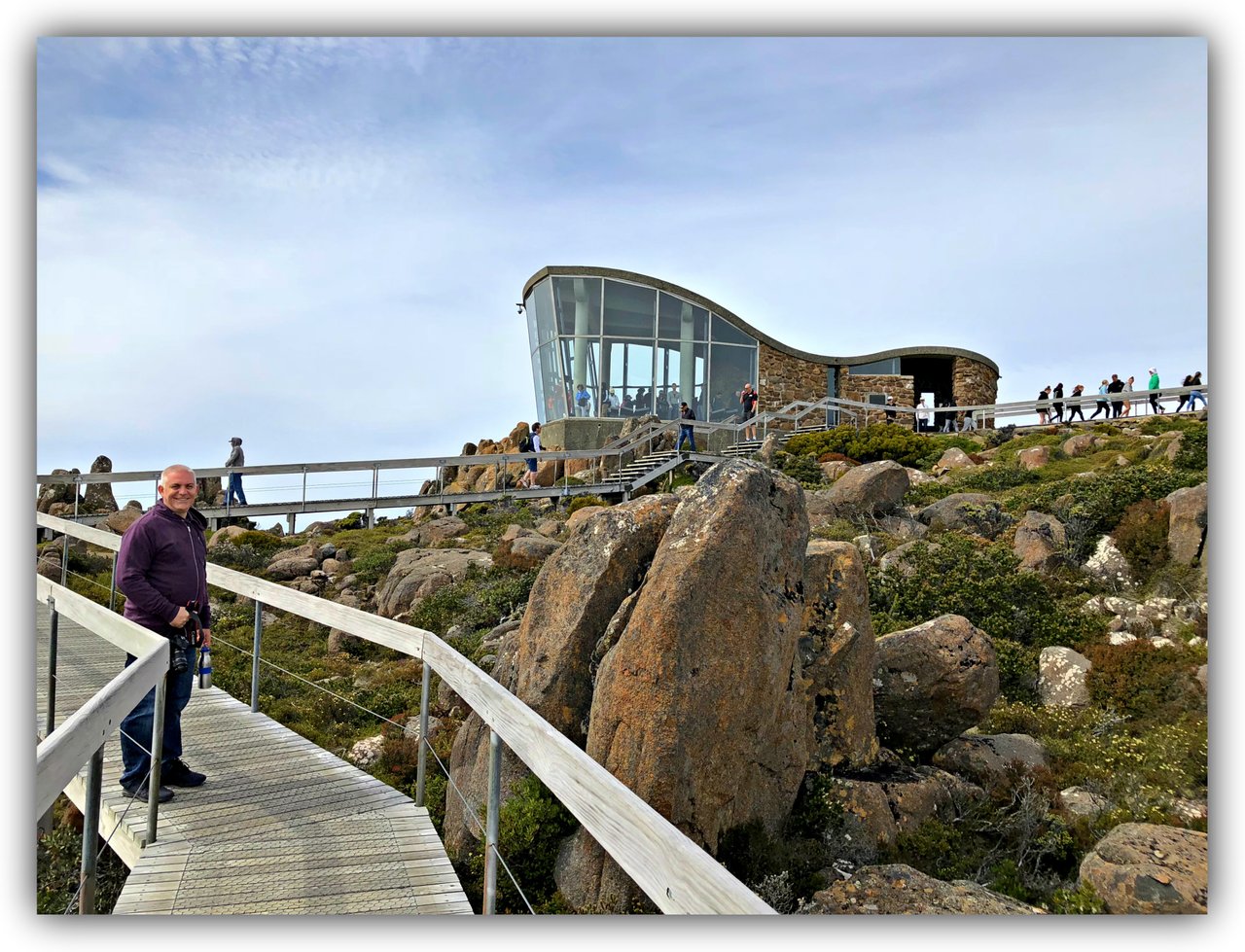
Mt. Wellington has survived fire, flood, and landslides but the remarkable, panoramic views of the city, river, land and sea, guarantee that it will continue to be Hobart’s major tourist attraction.
Source:
THANK YOU FOR VIEWING. HAVE A GREAT DAY.
...
View this post on TravelFeed for the best experience.
















































